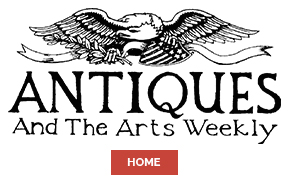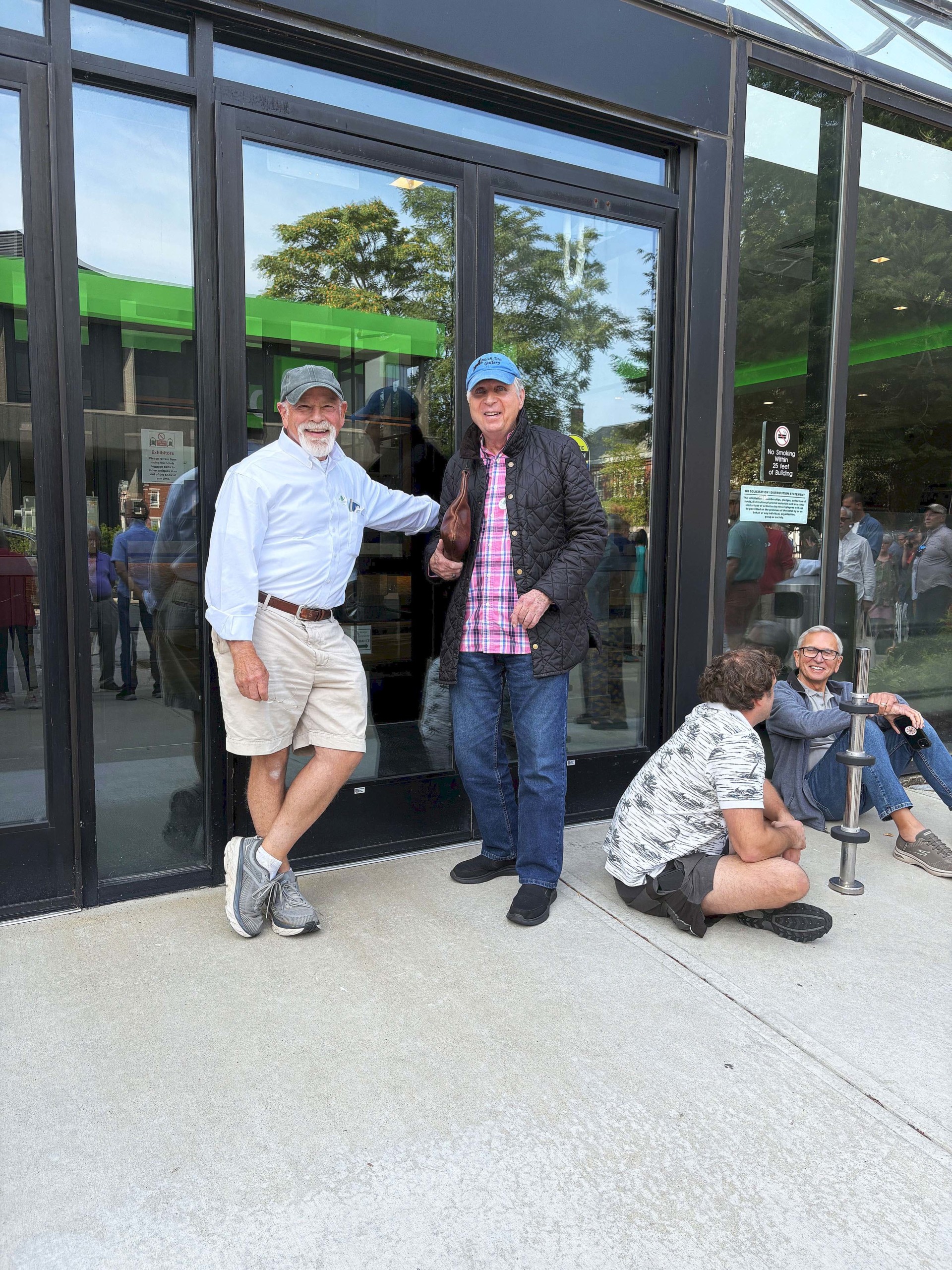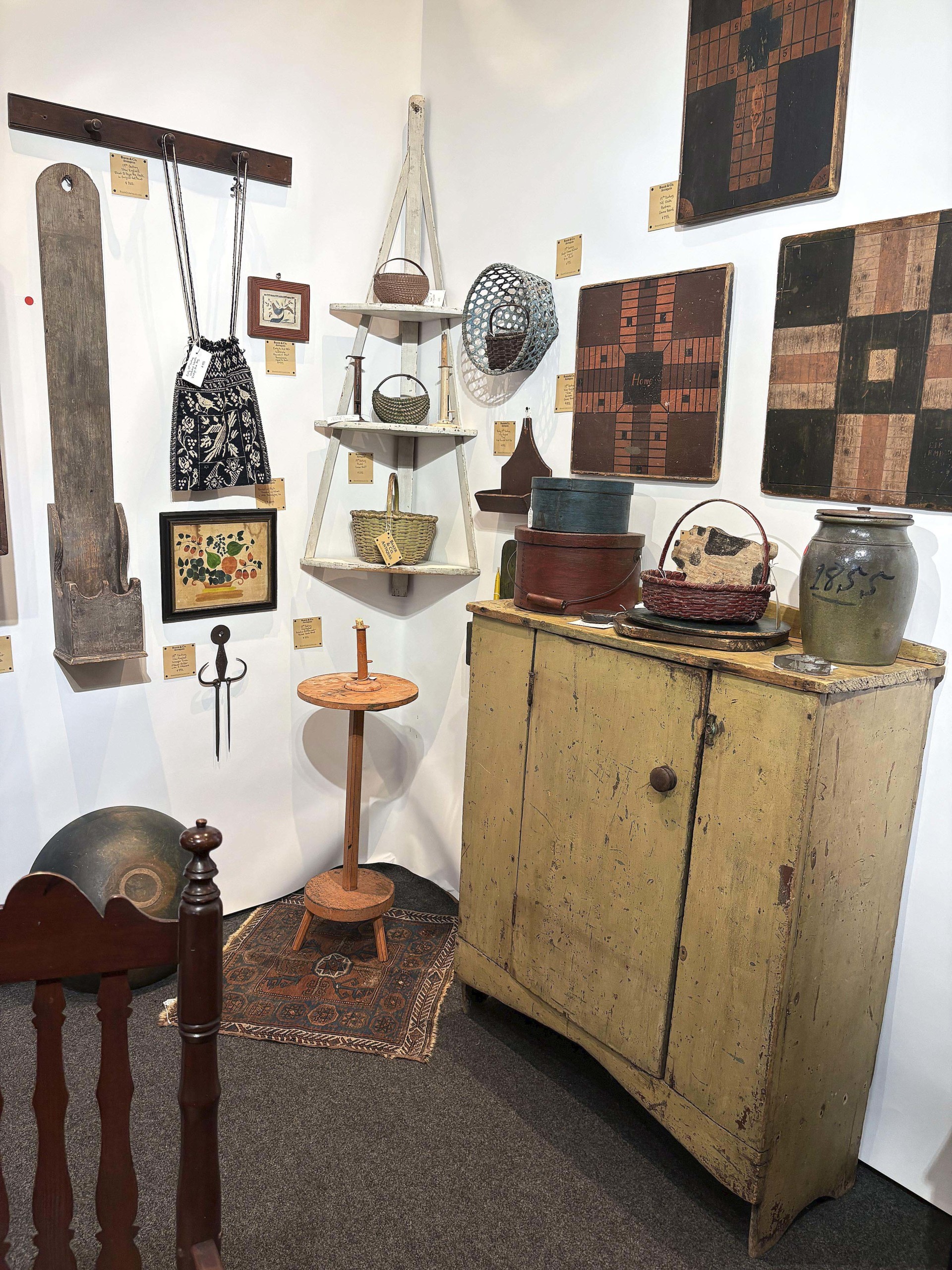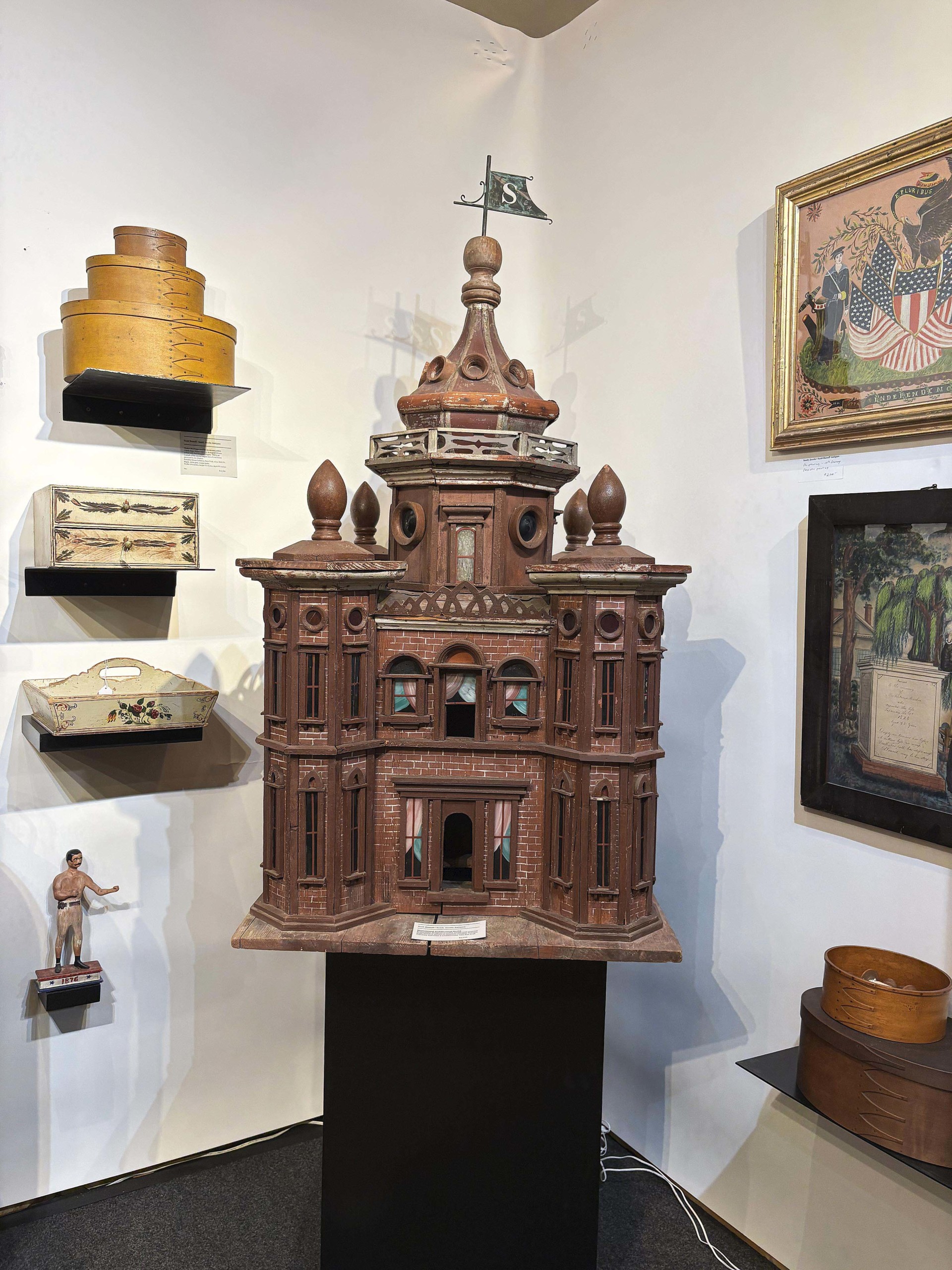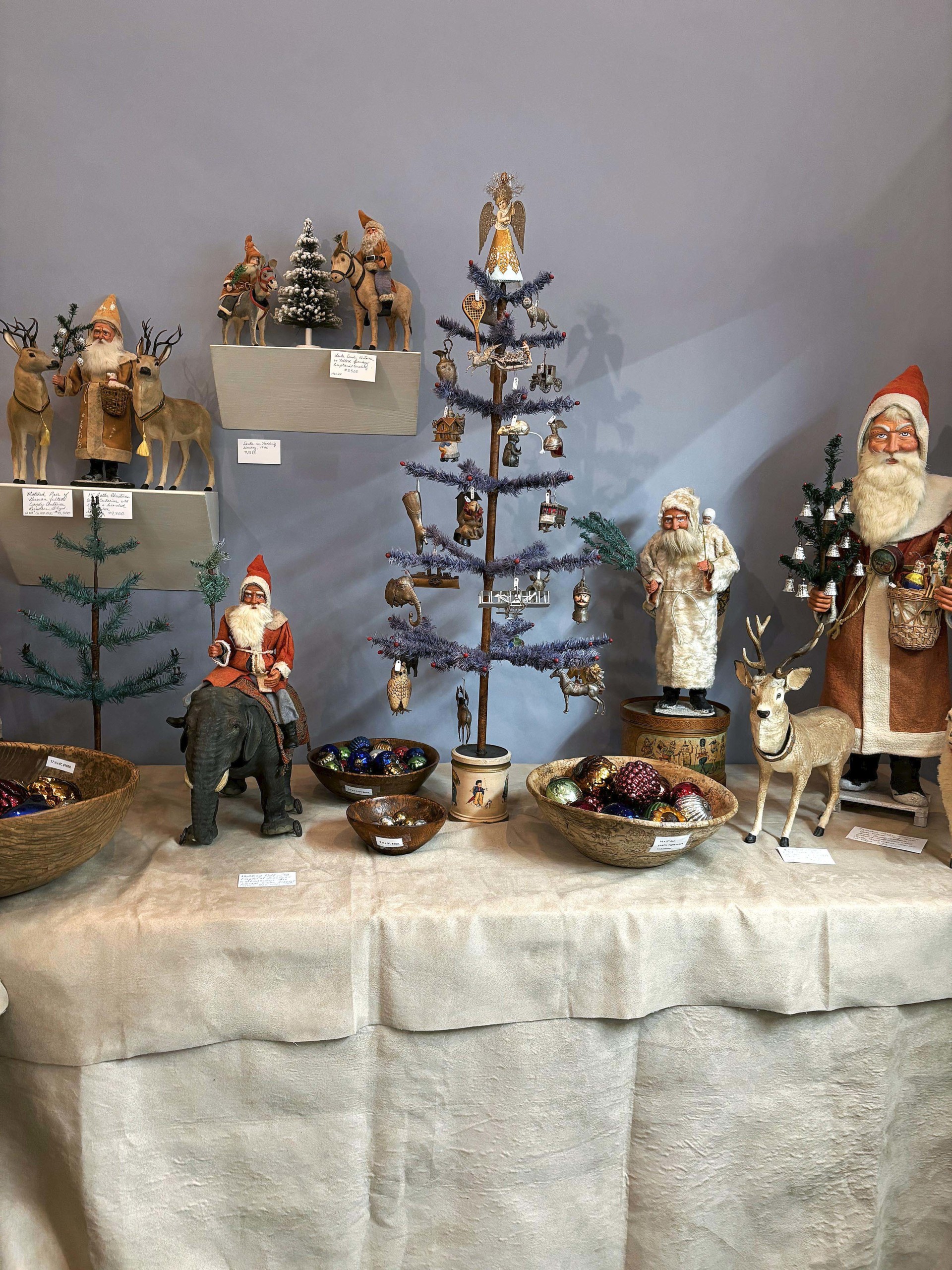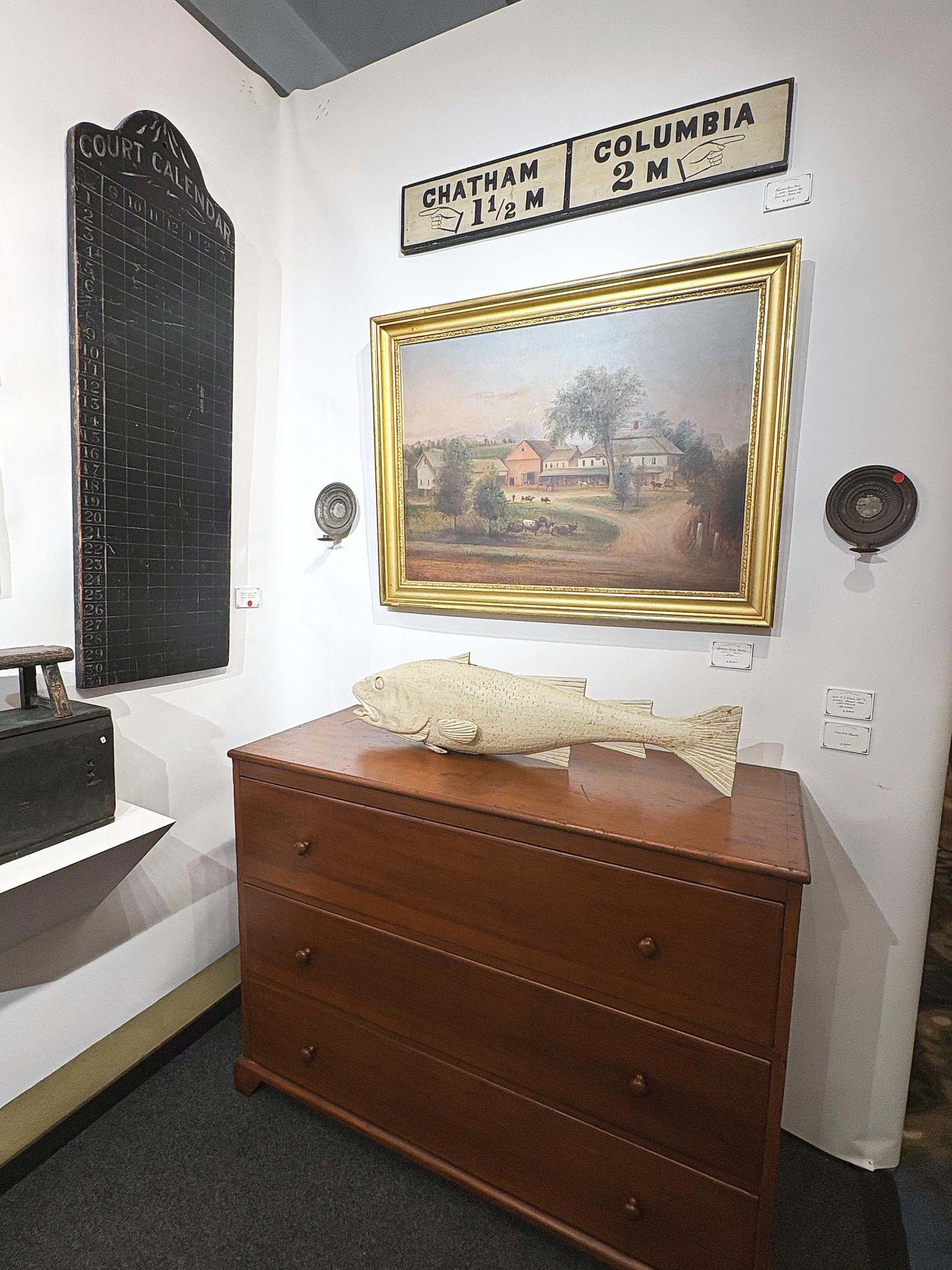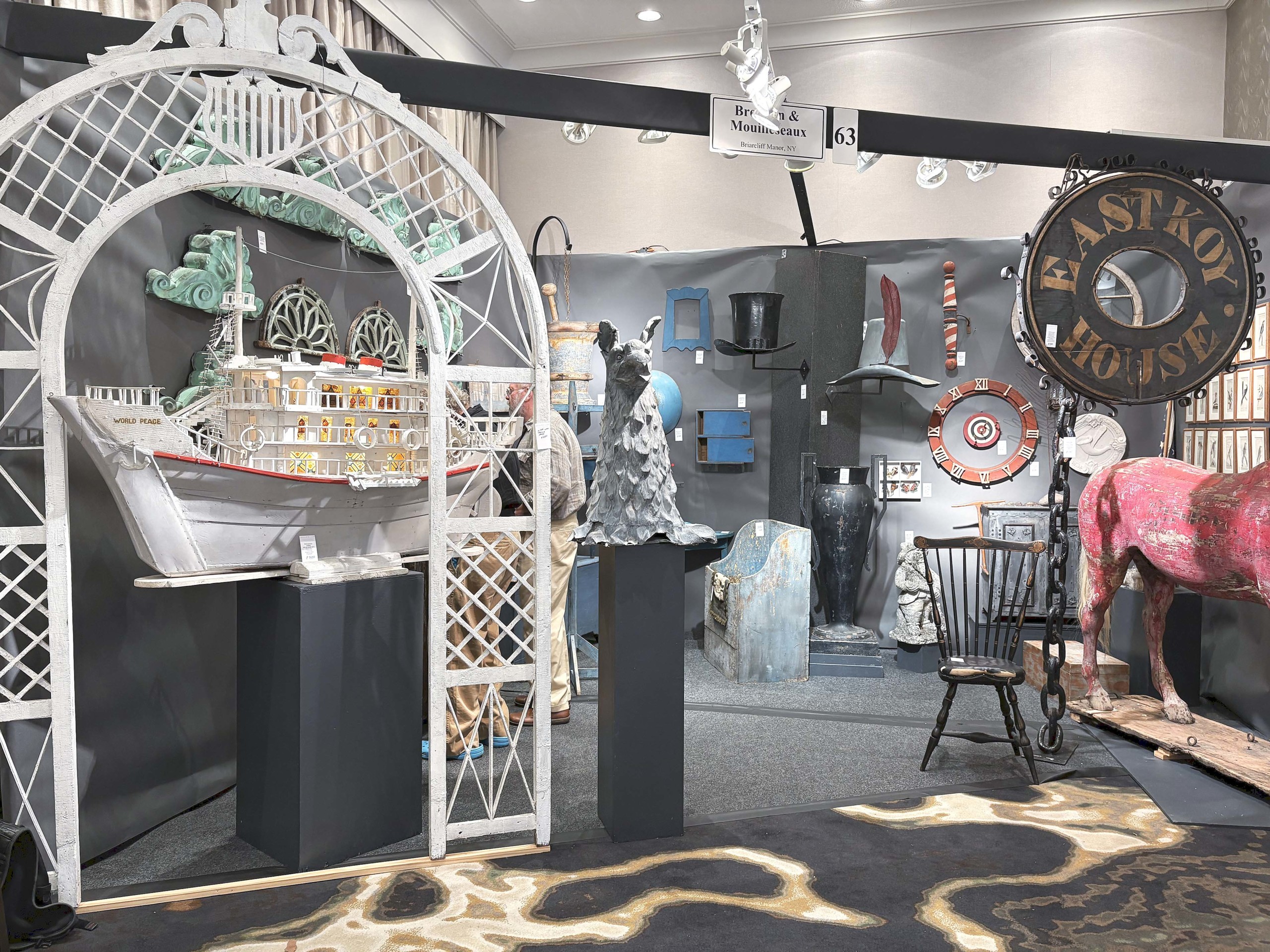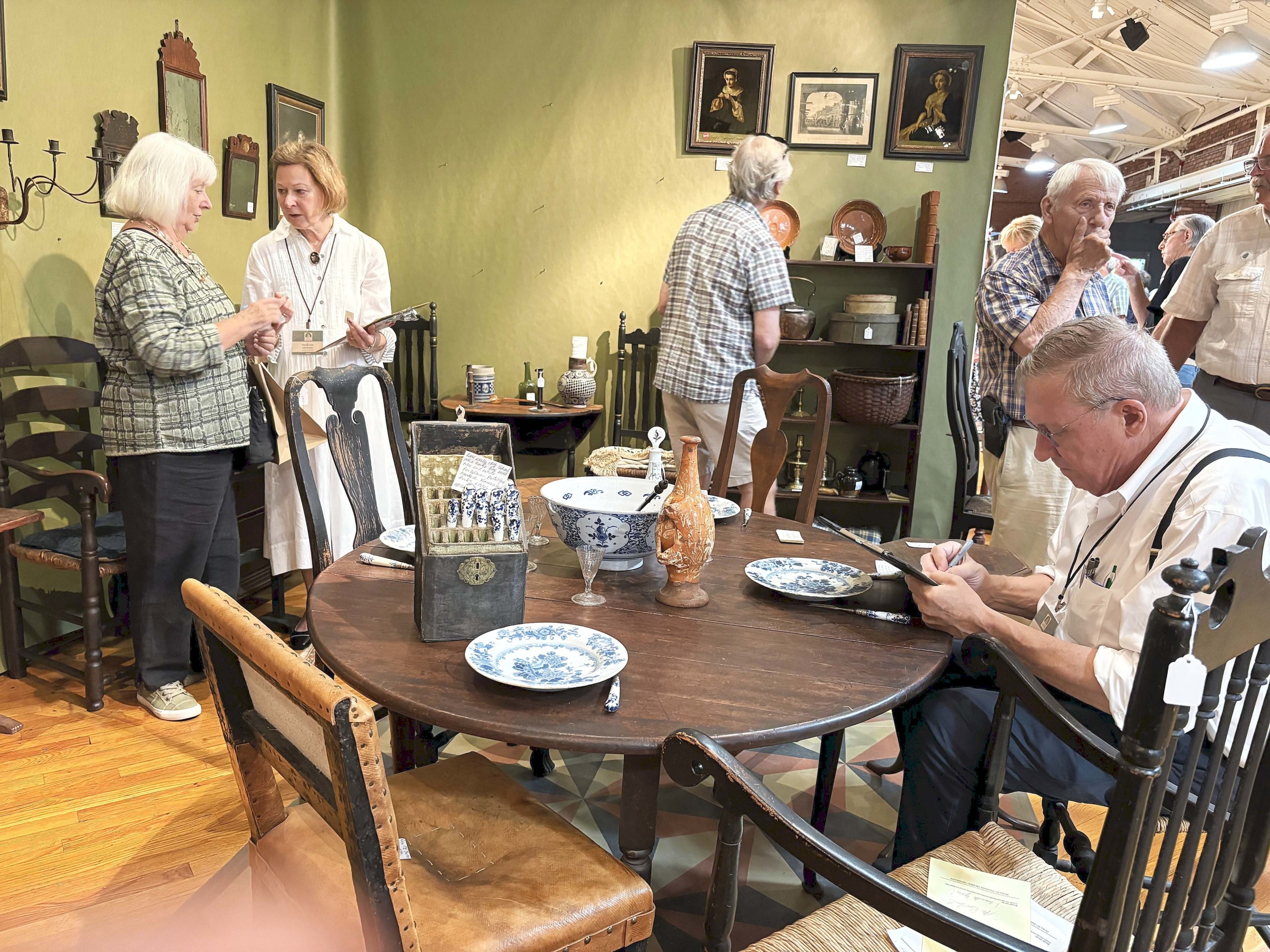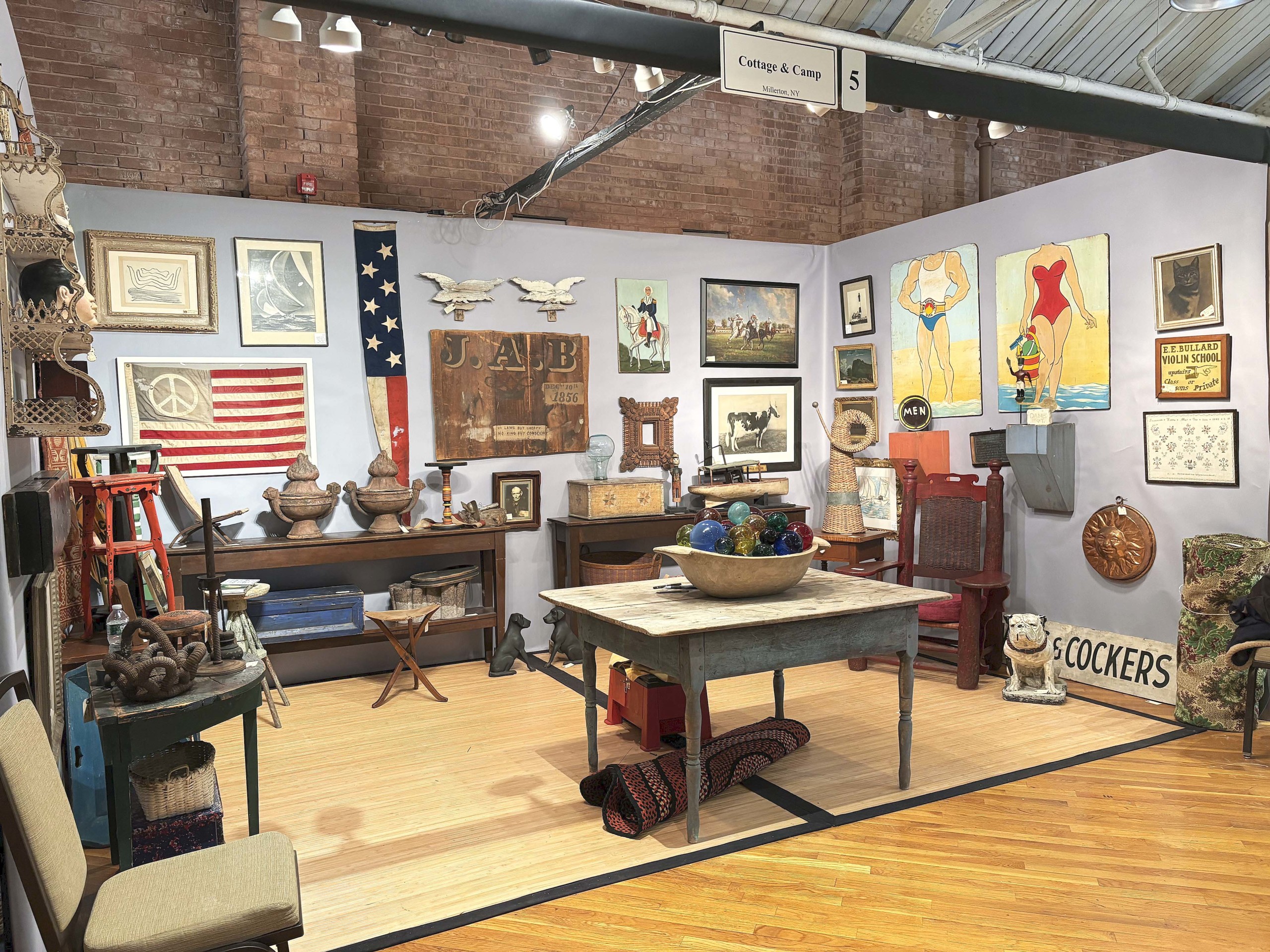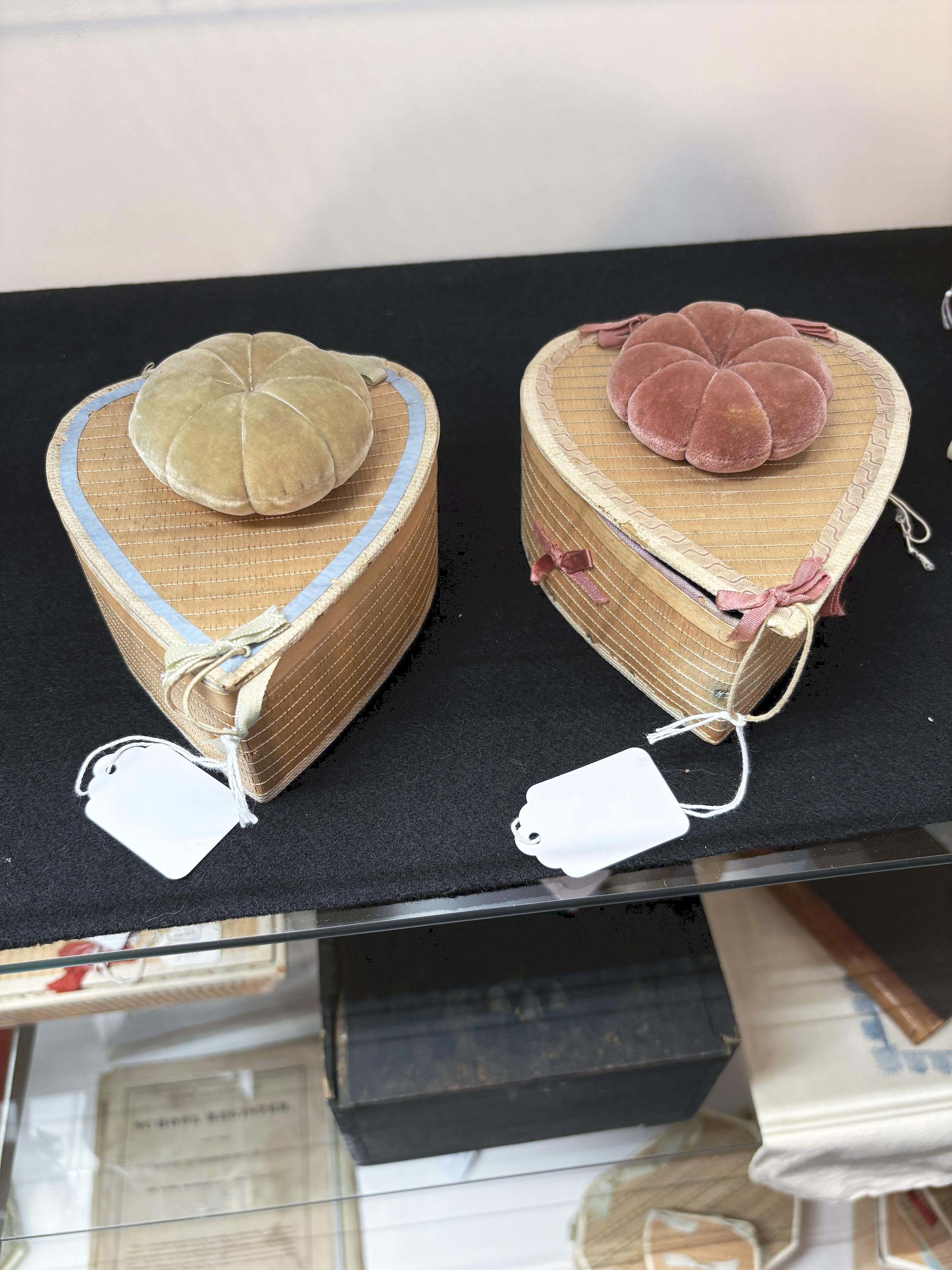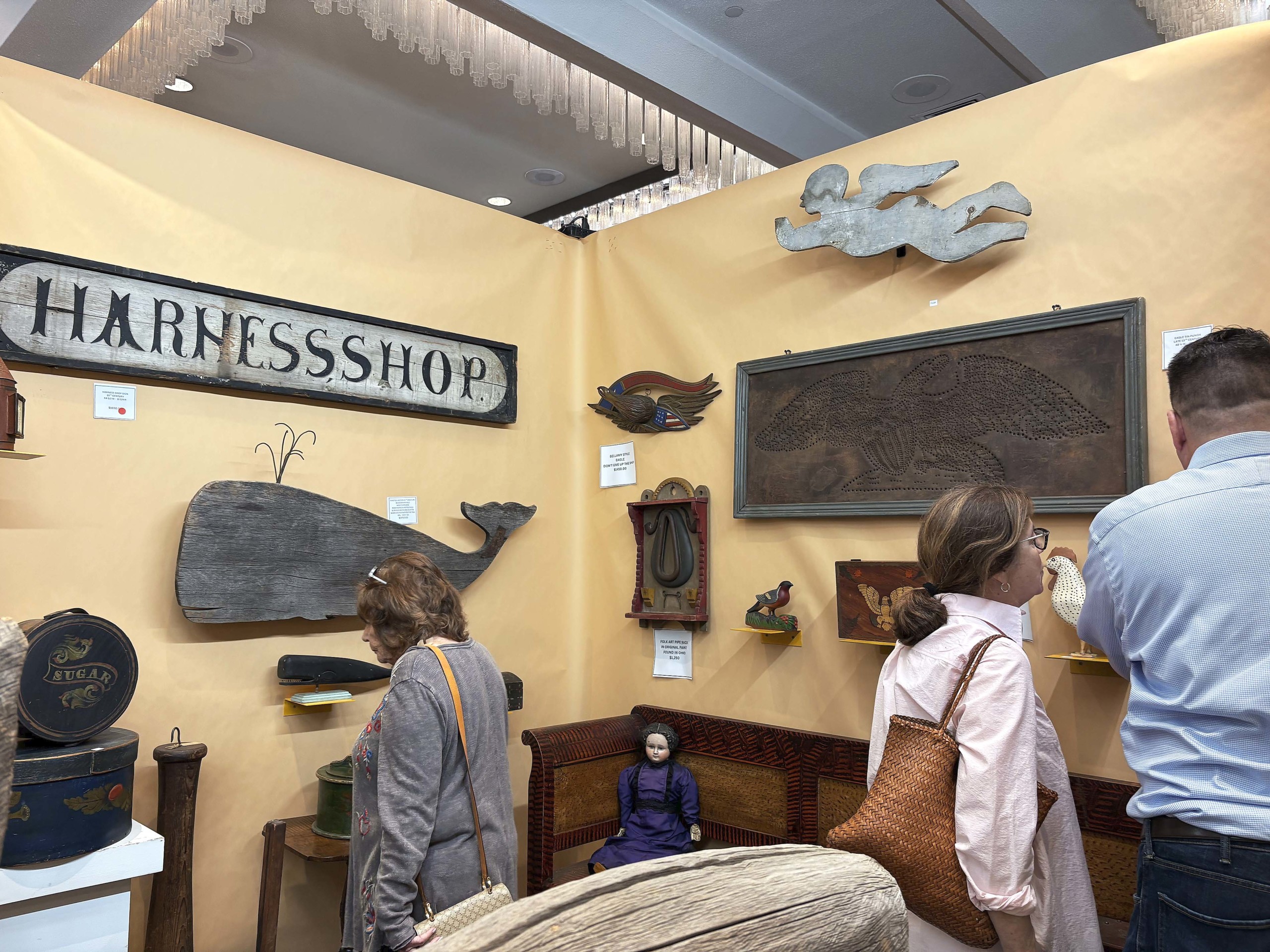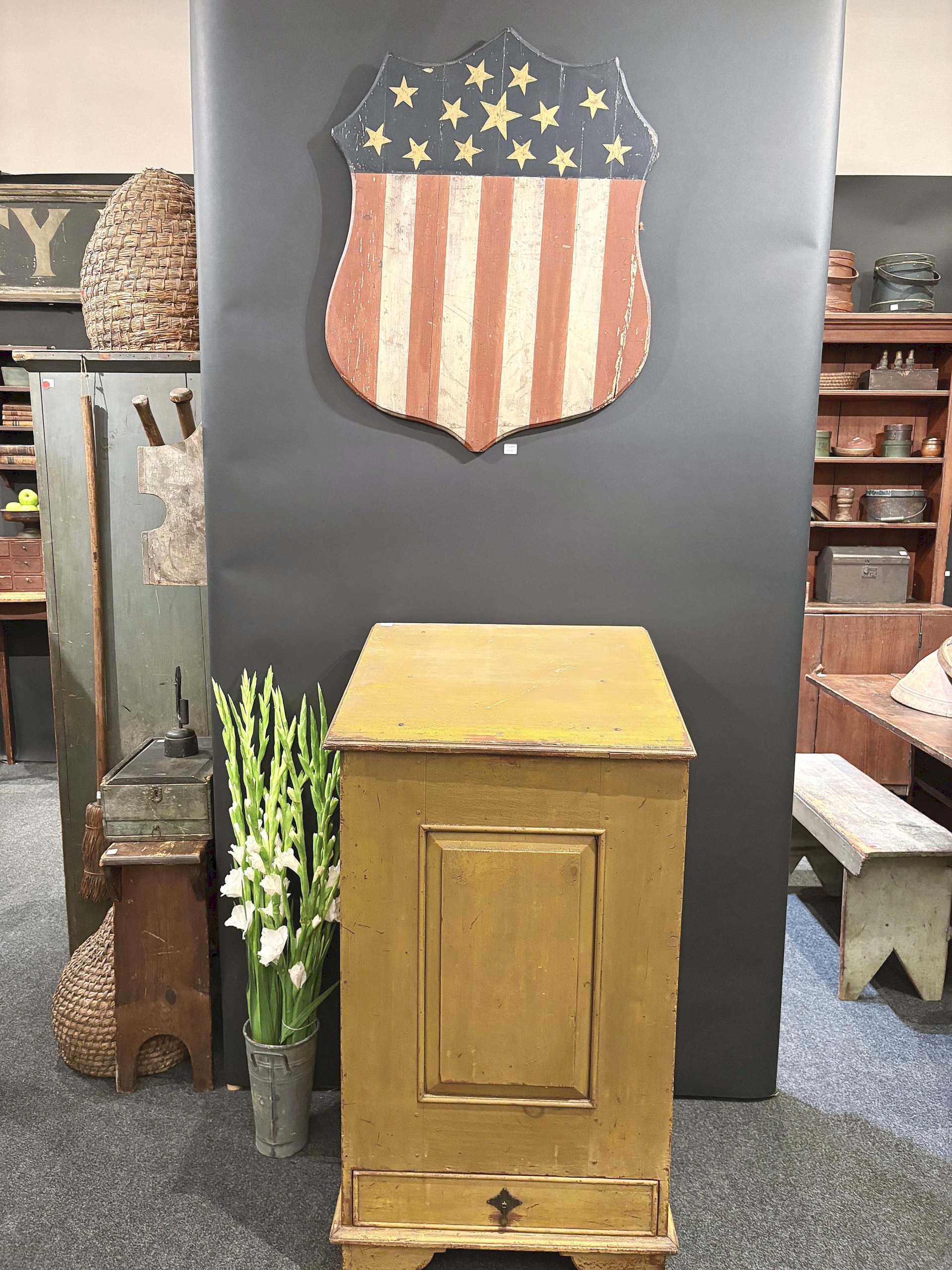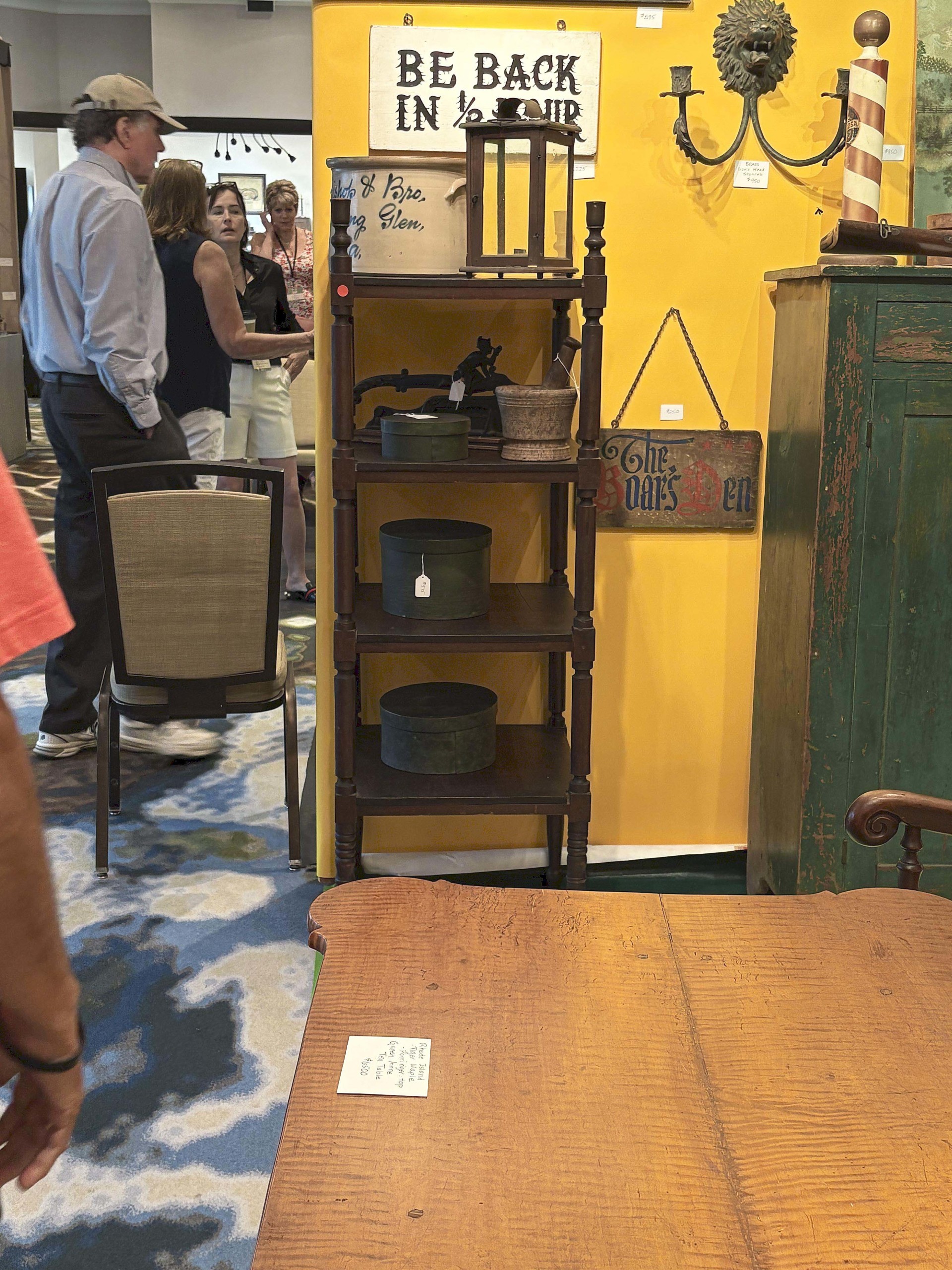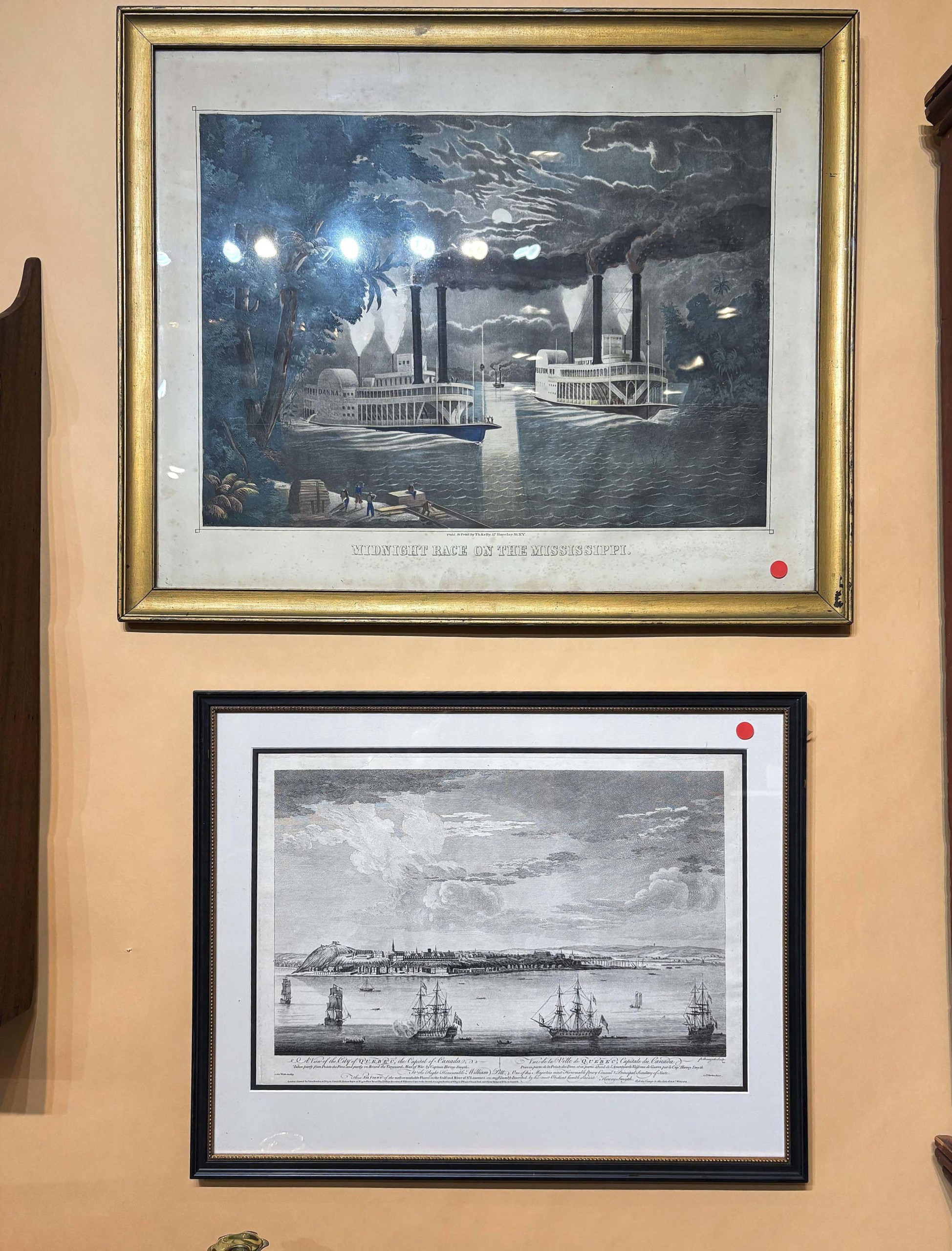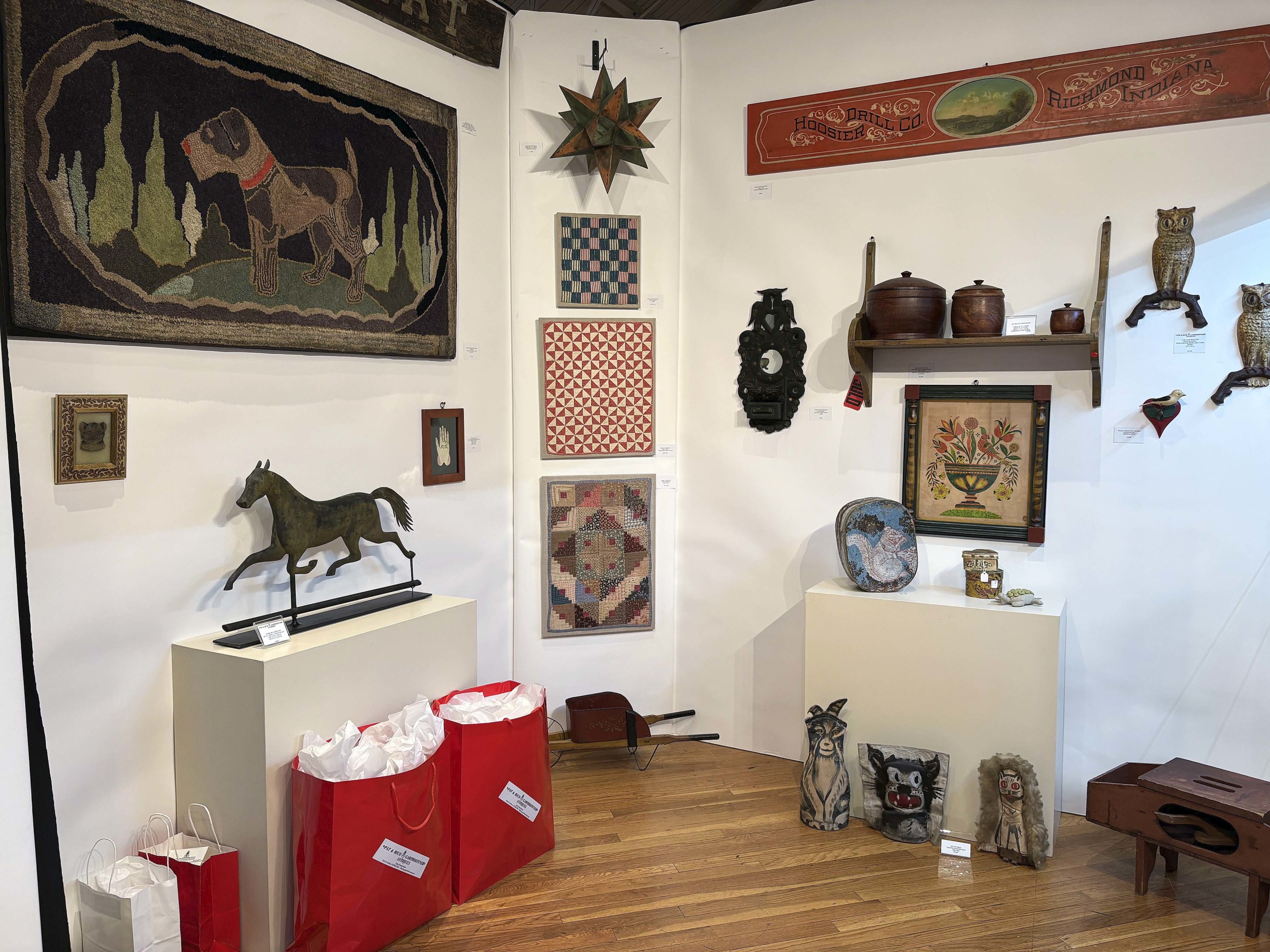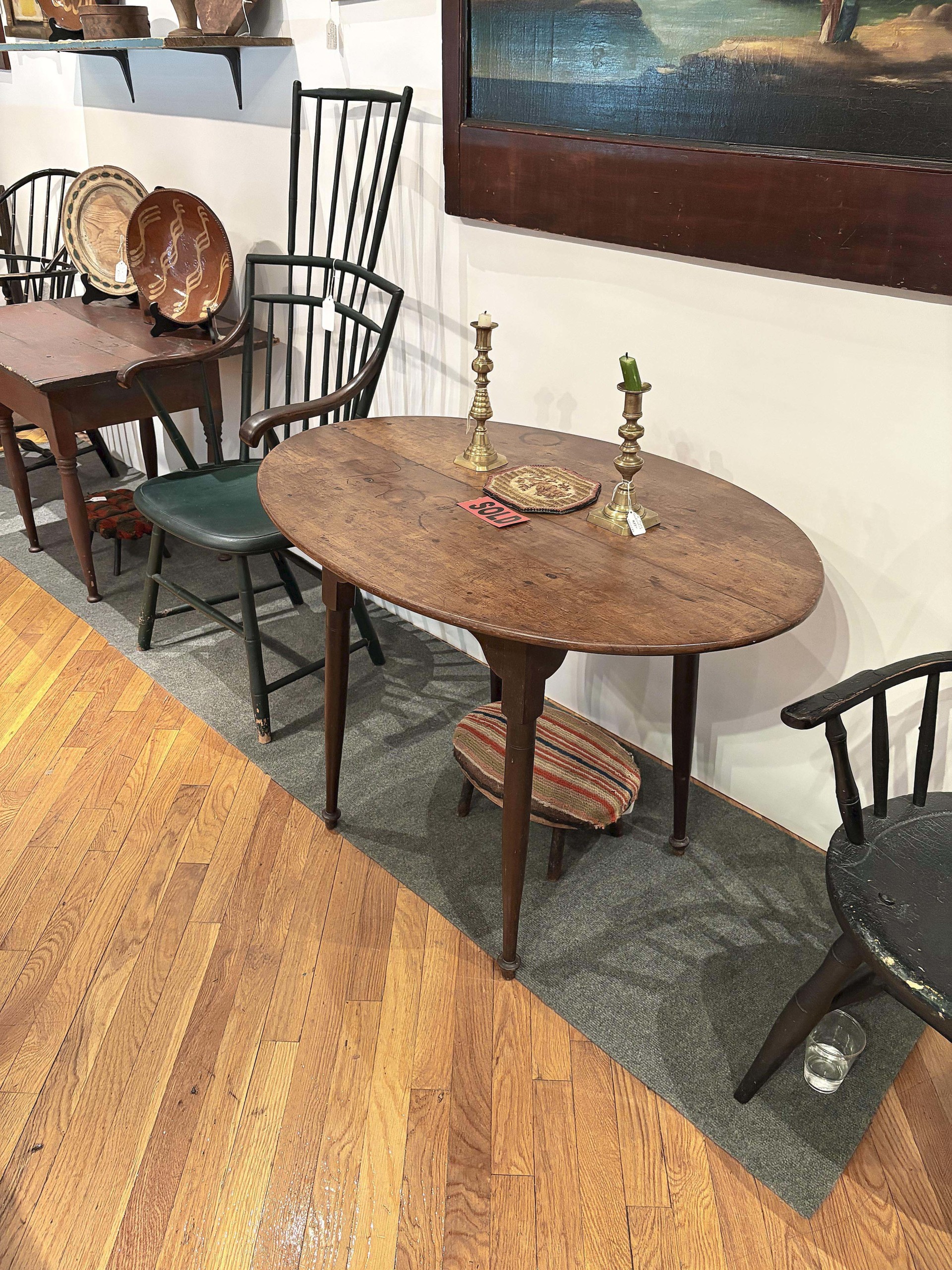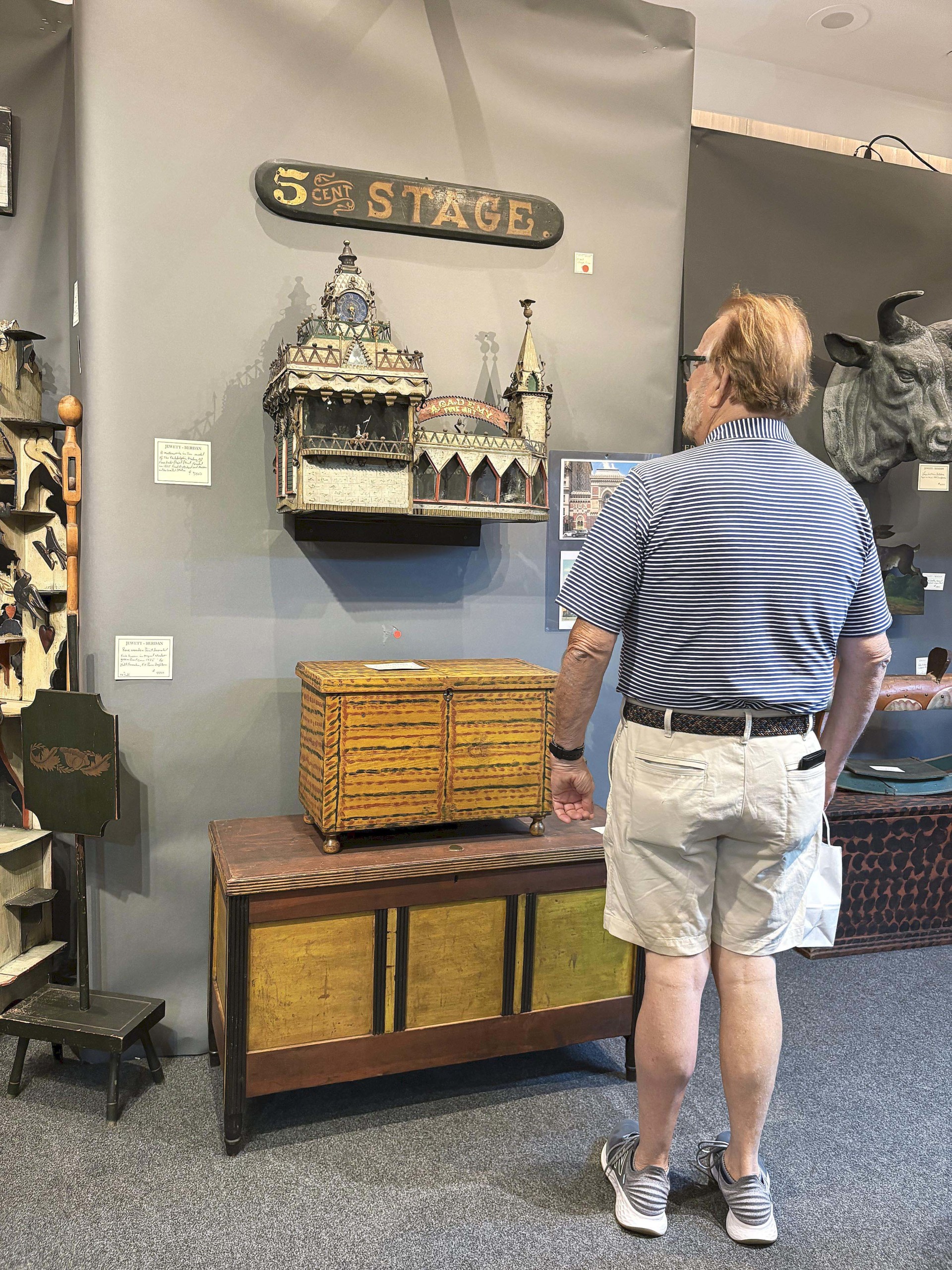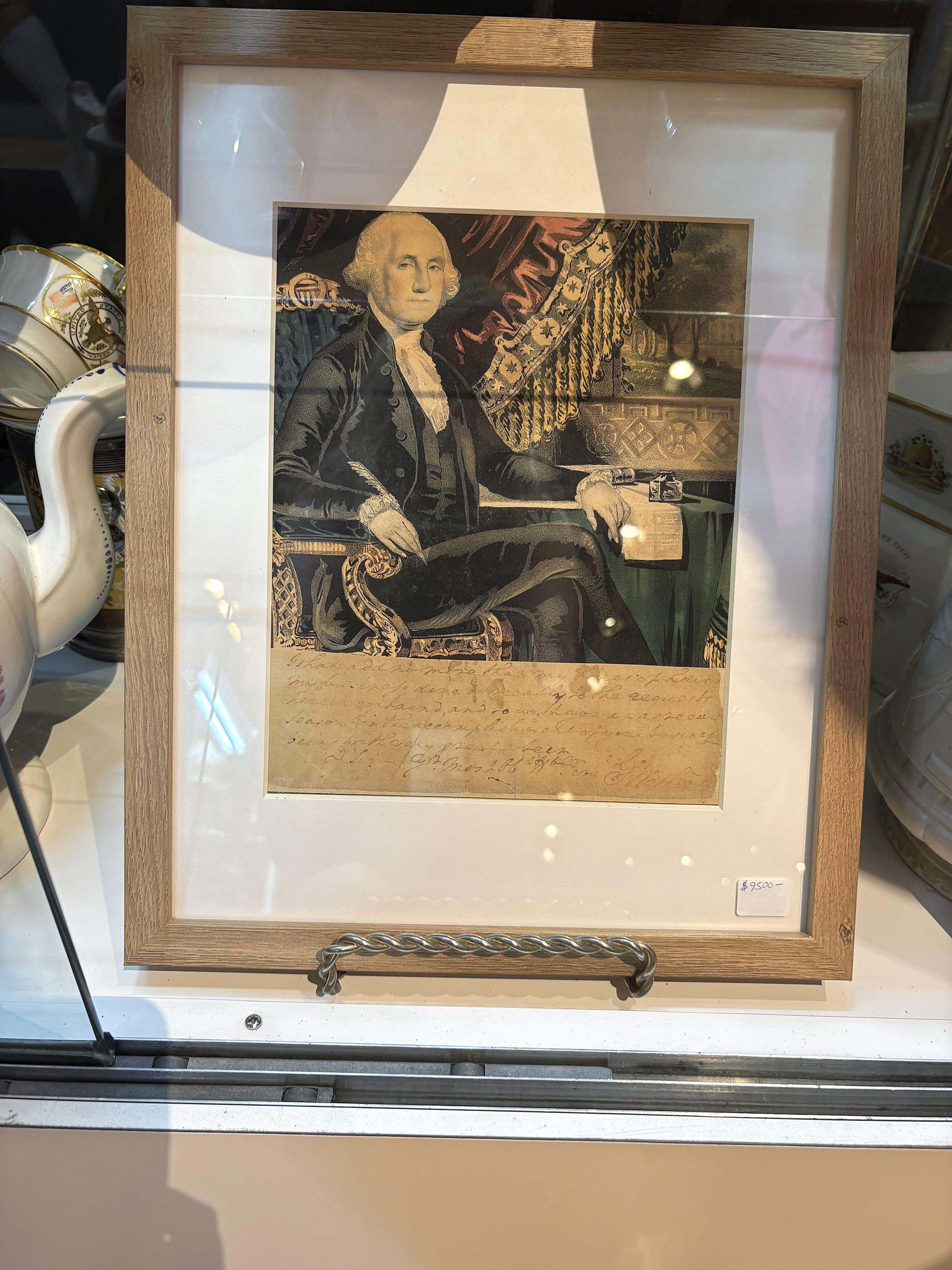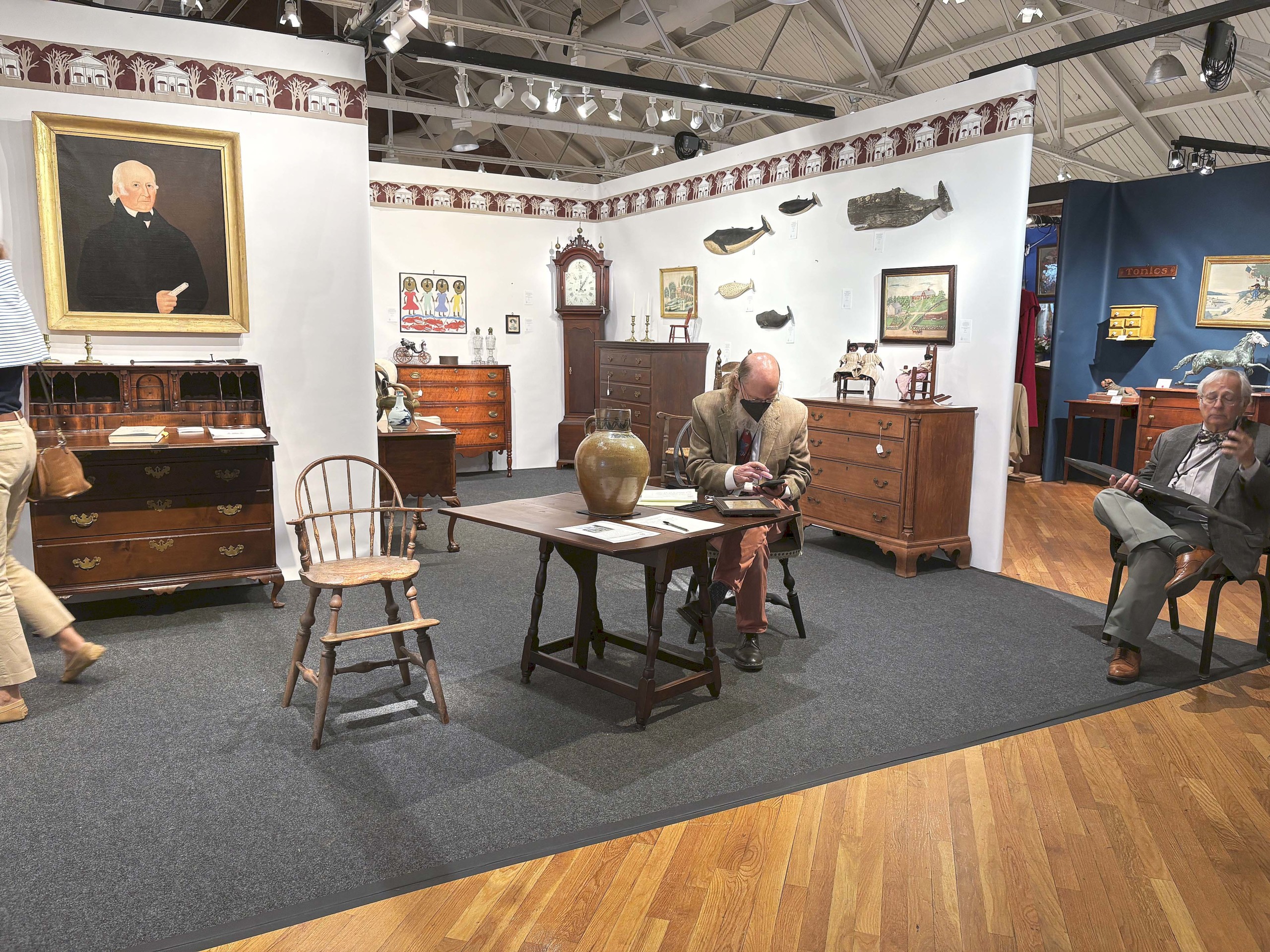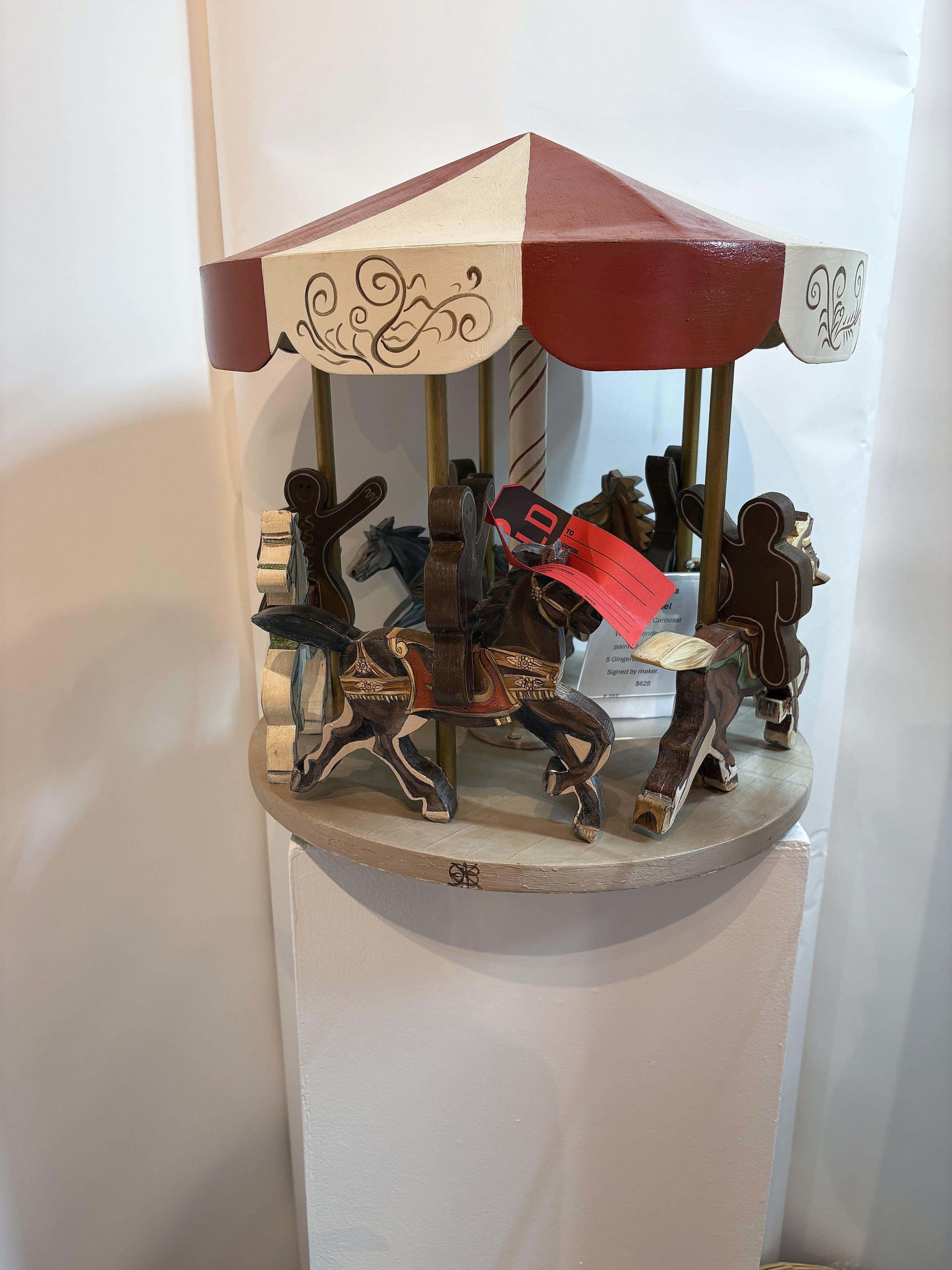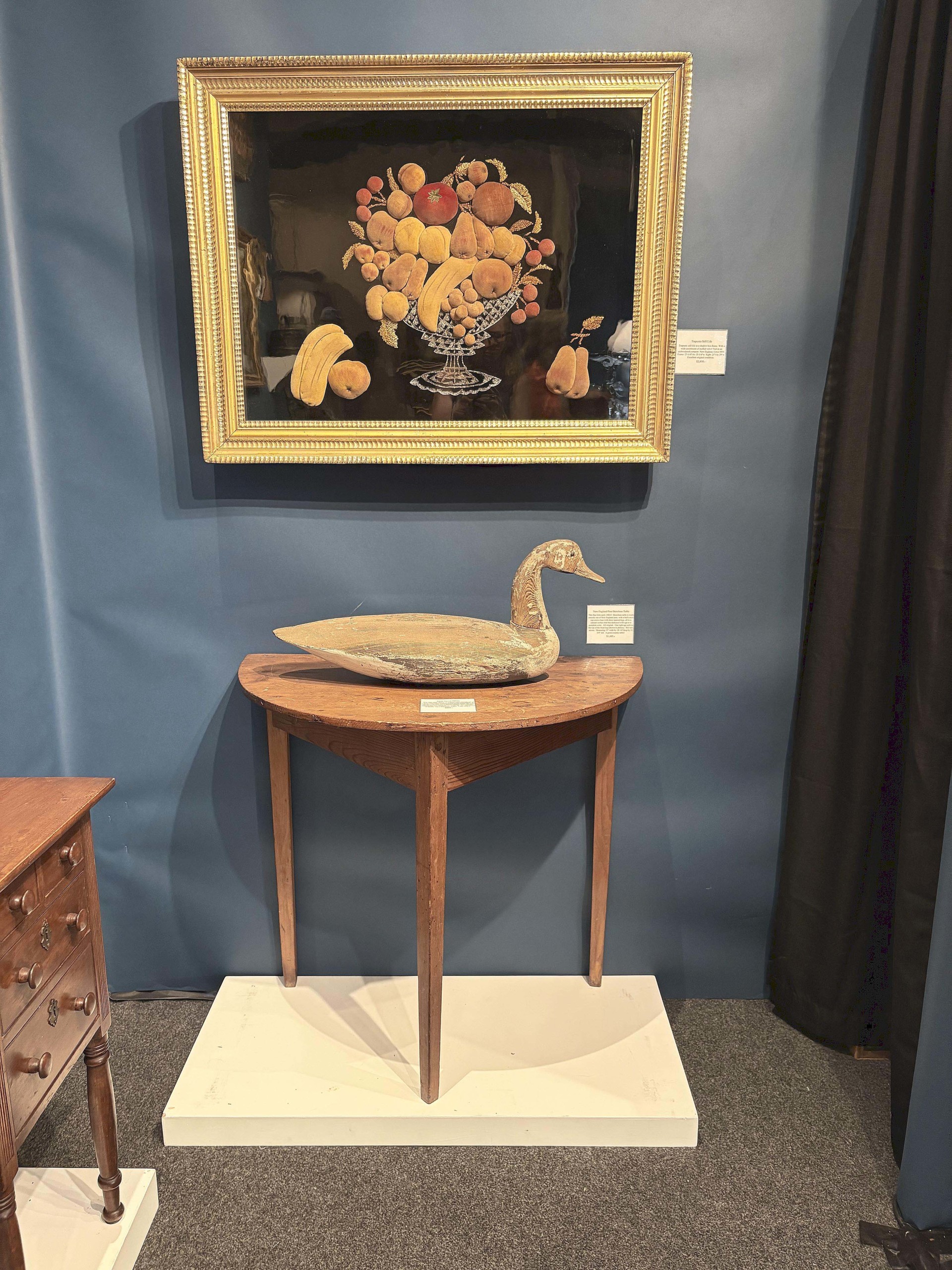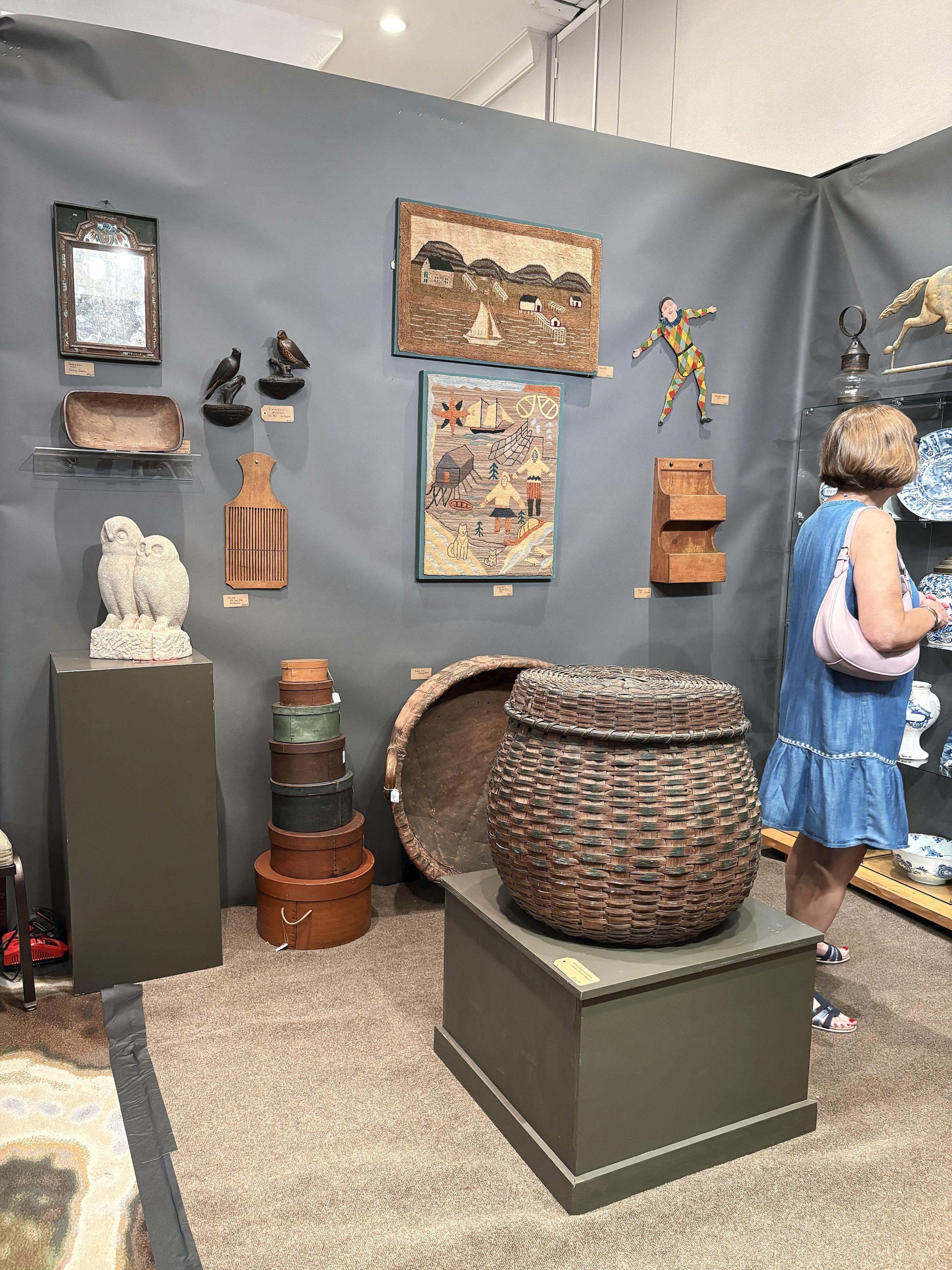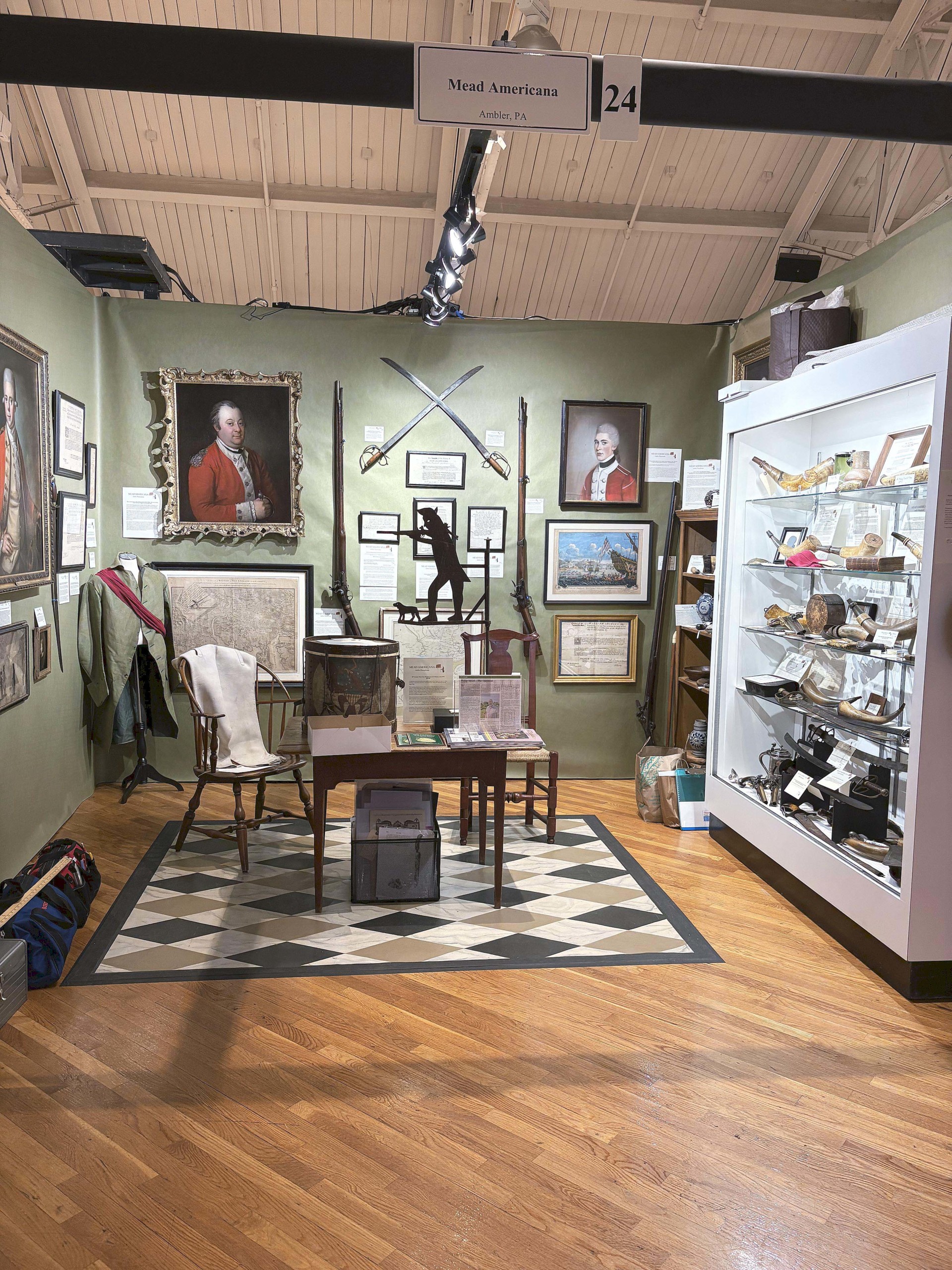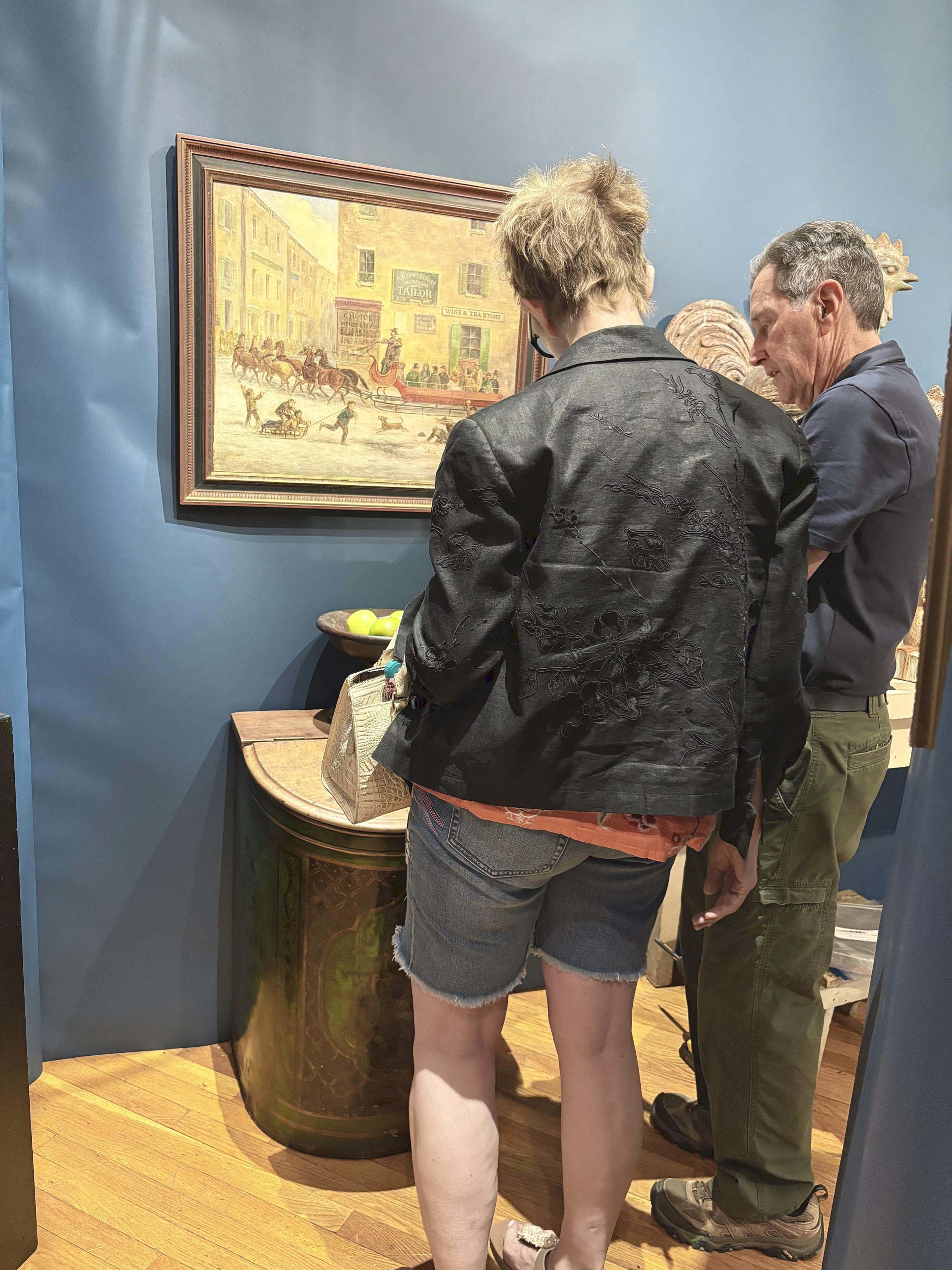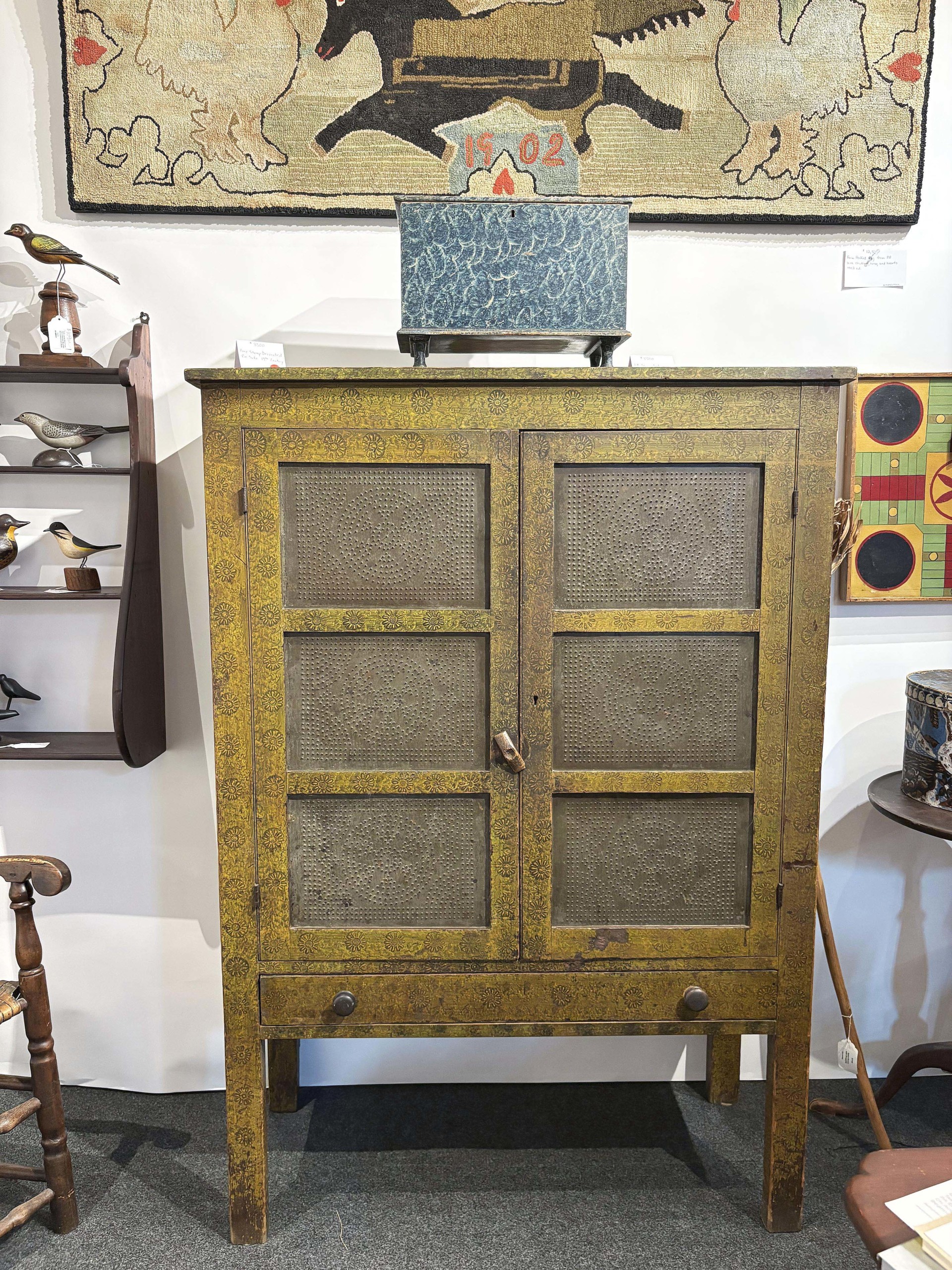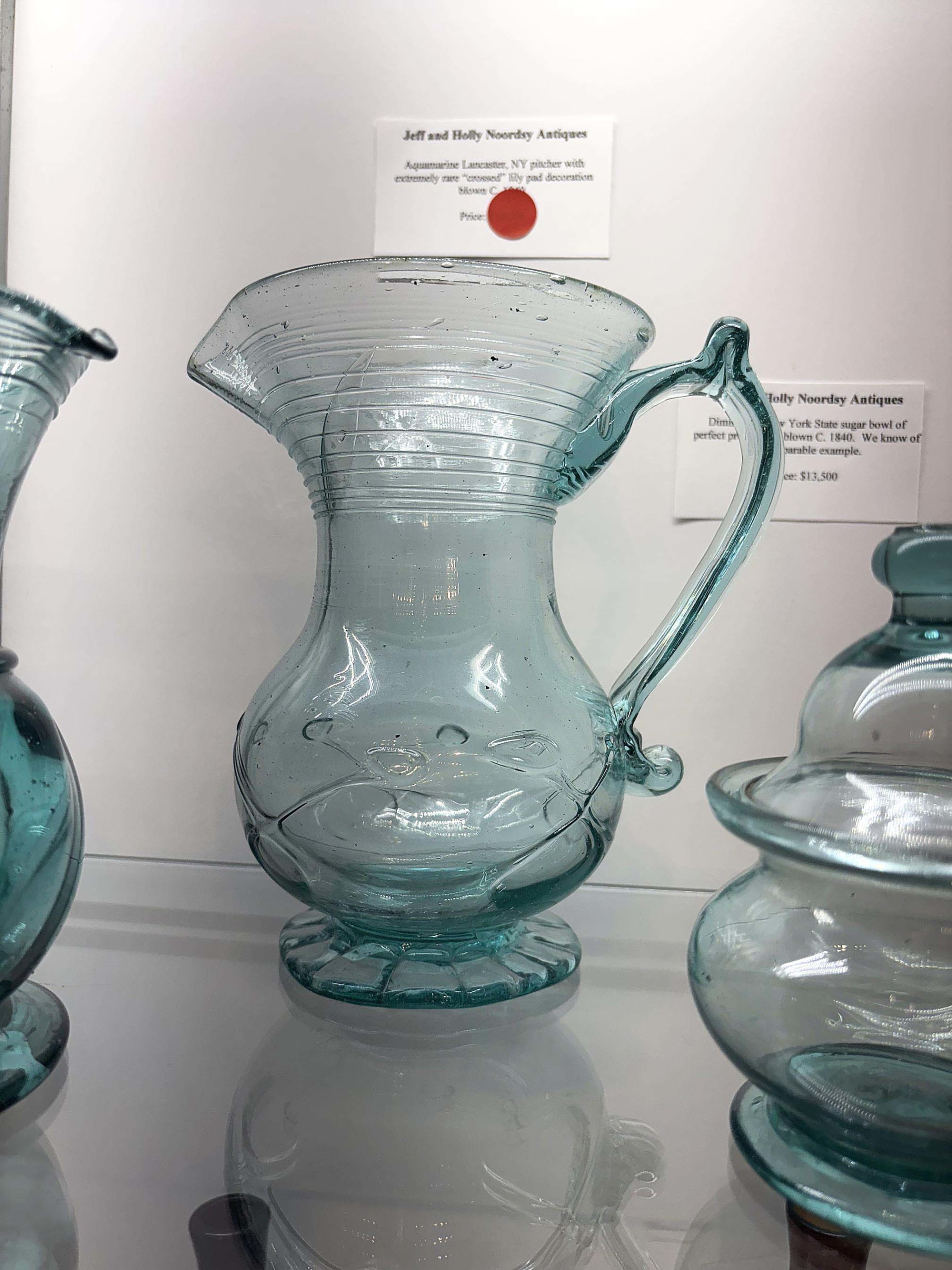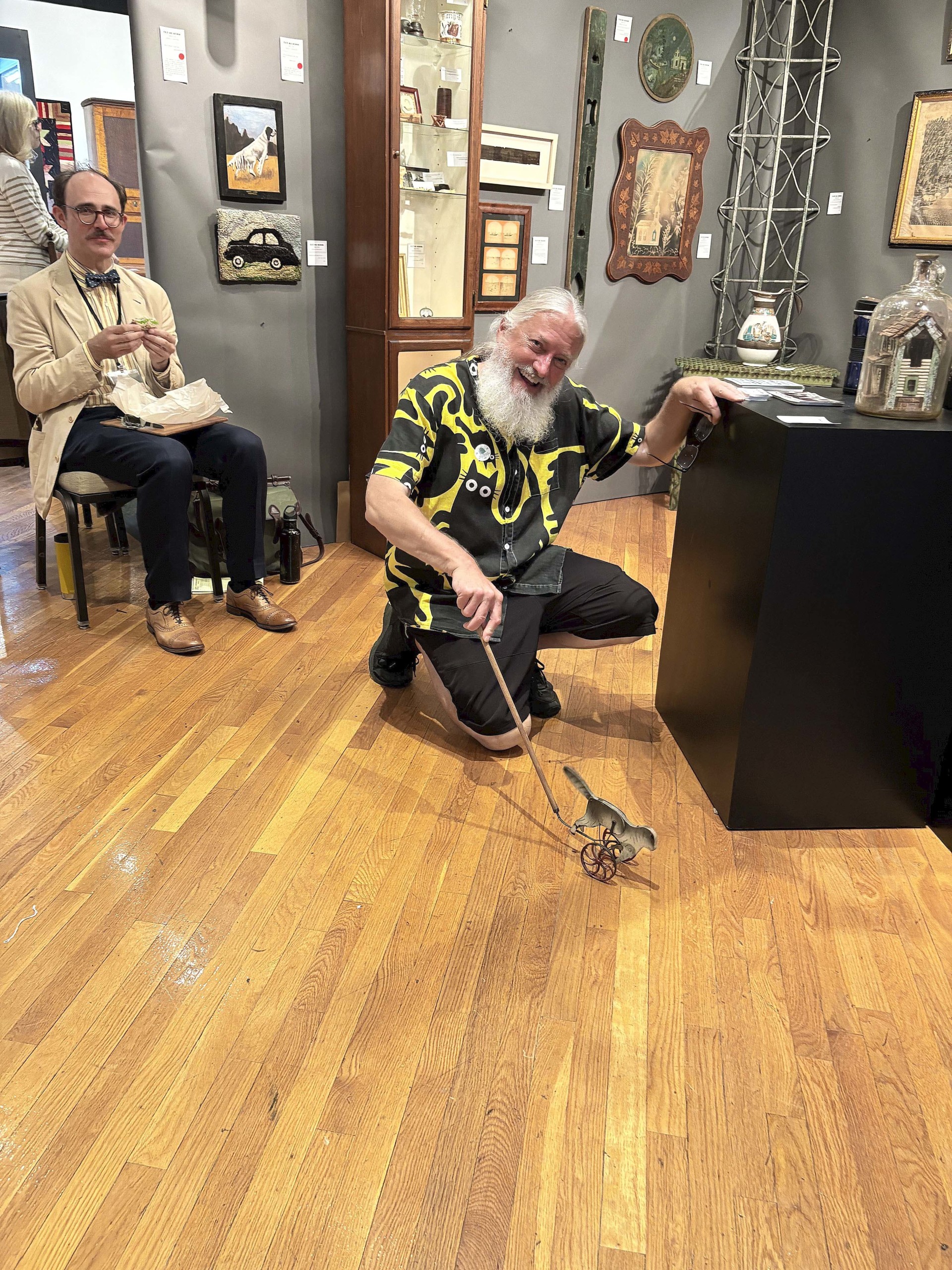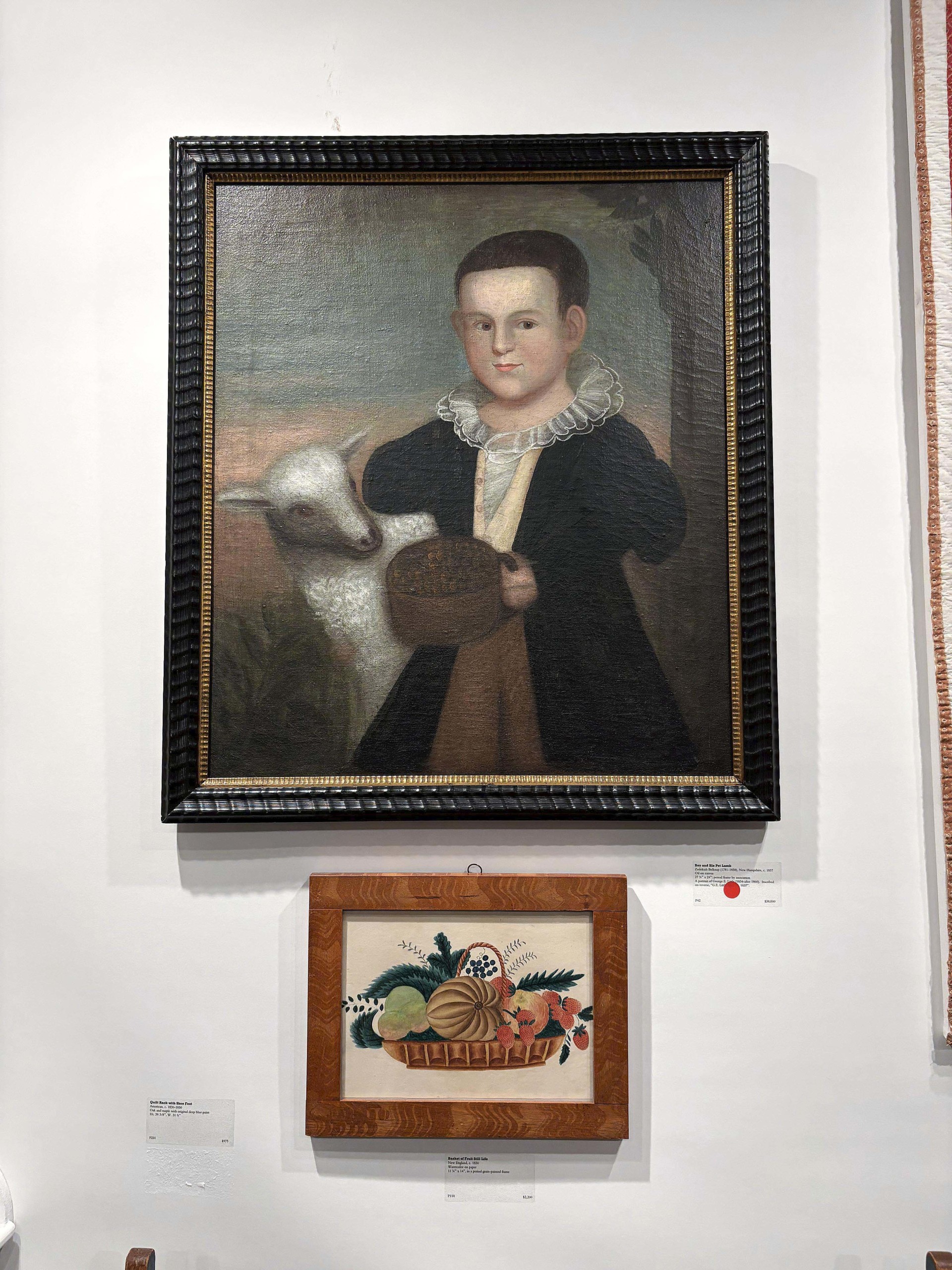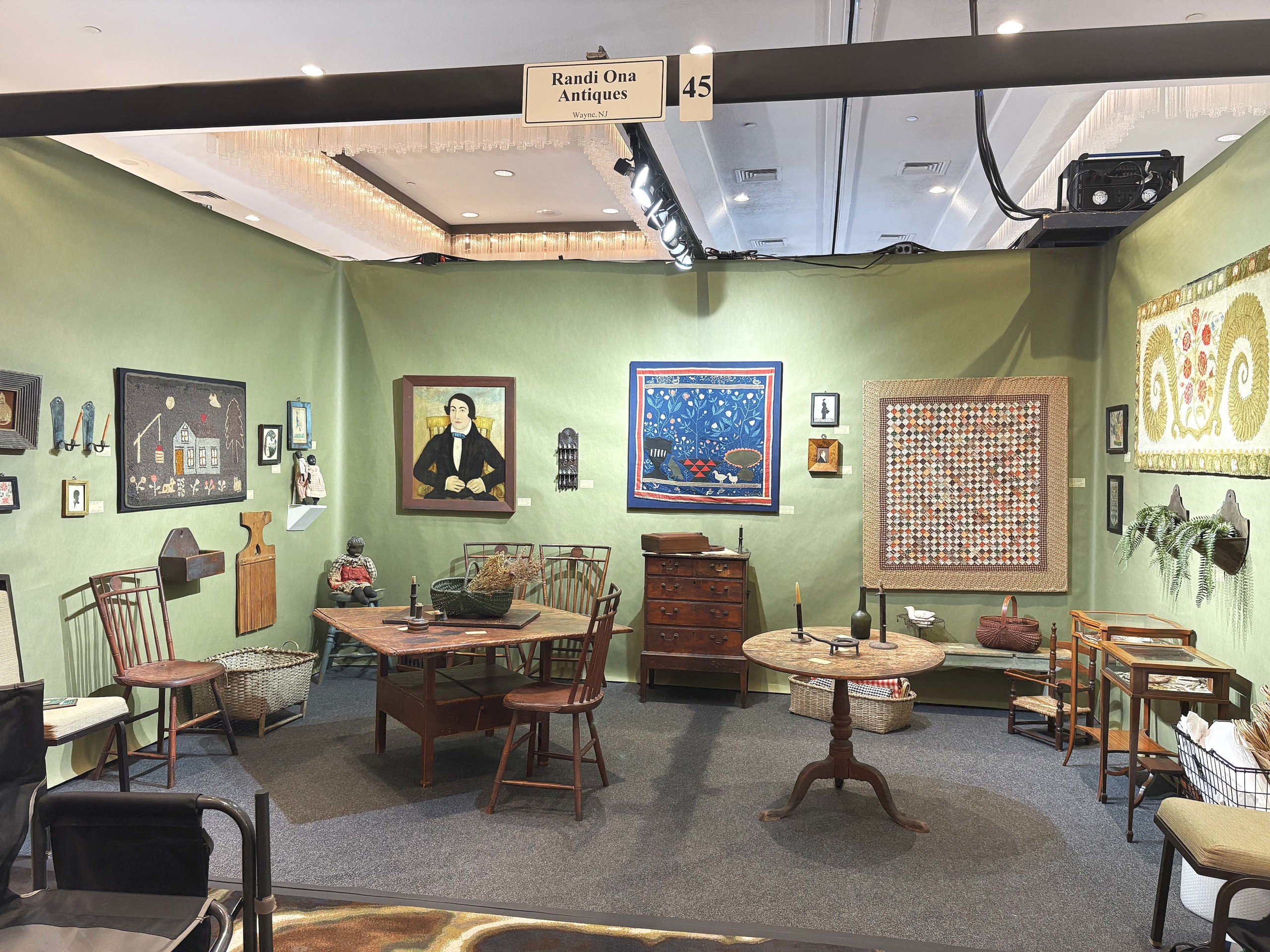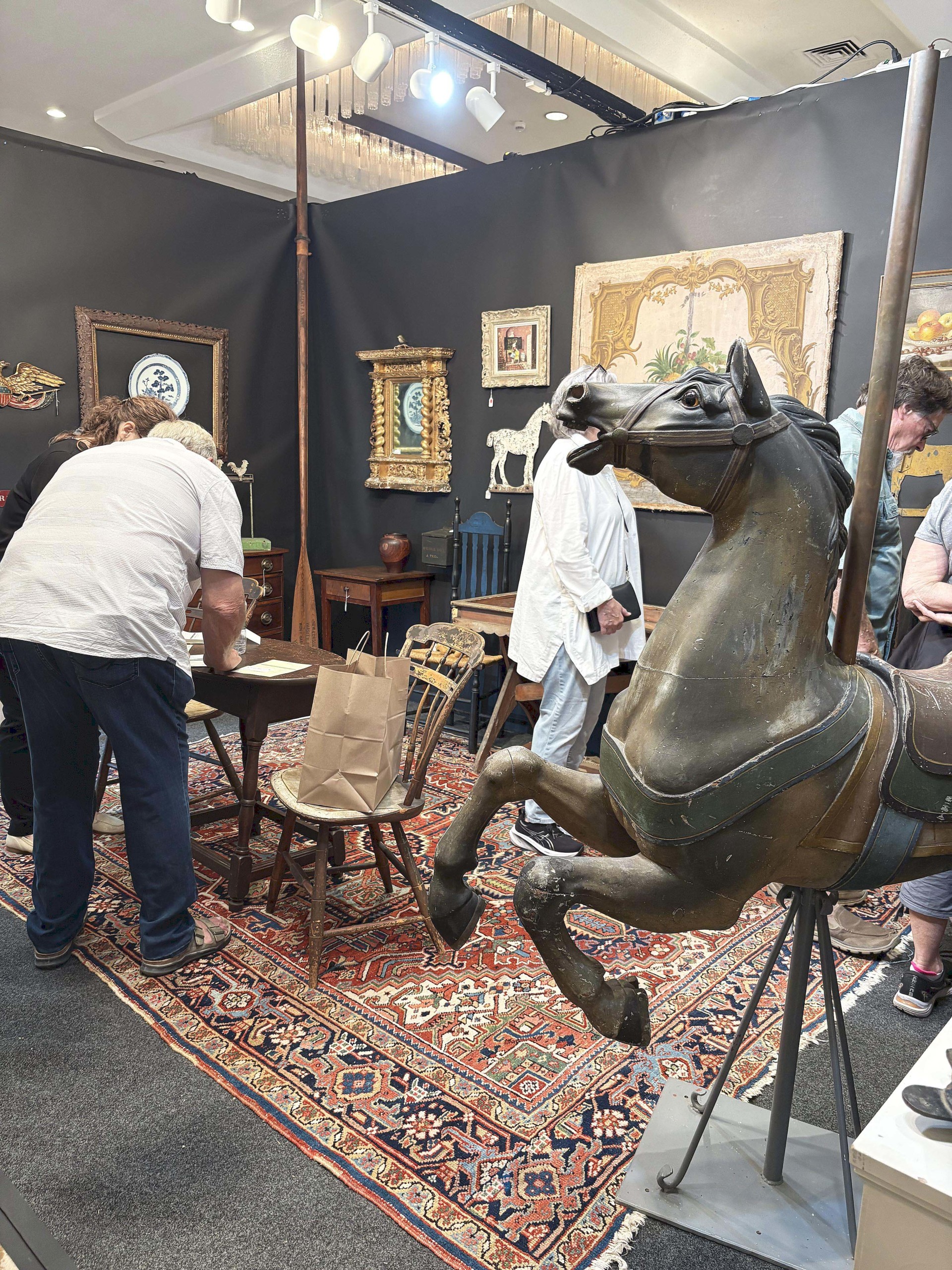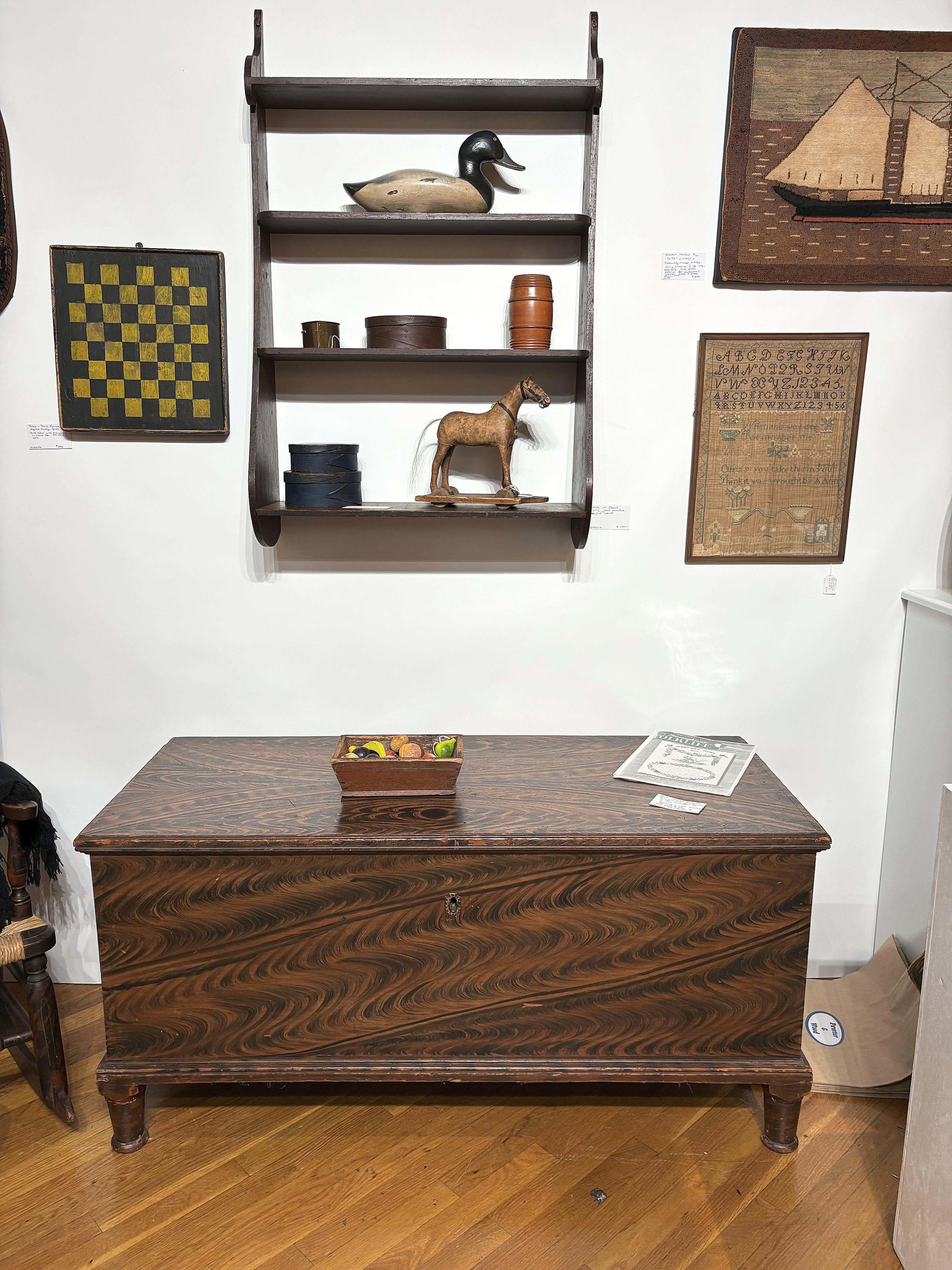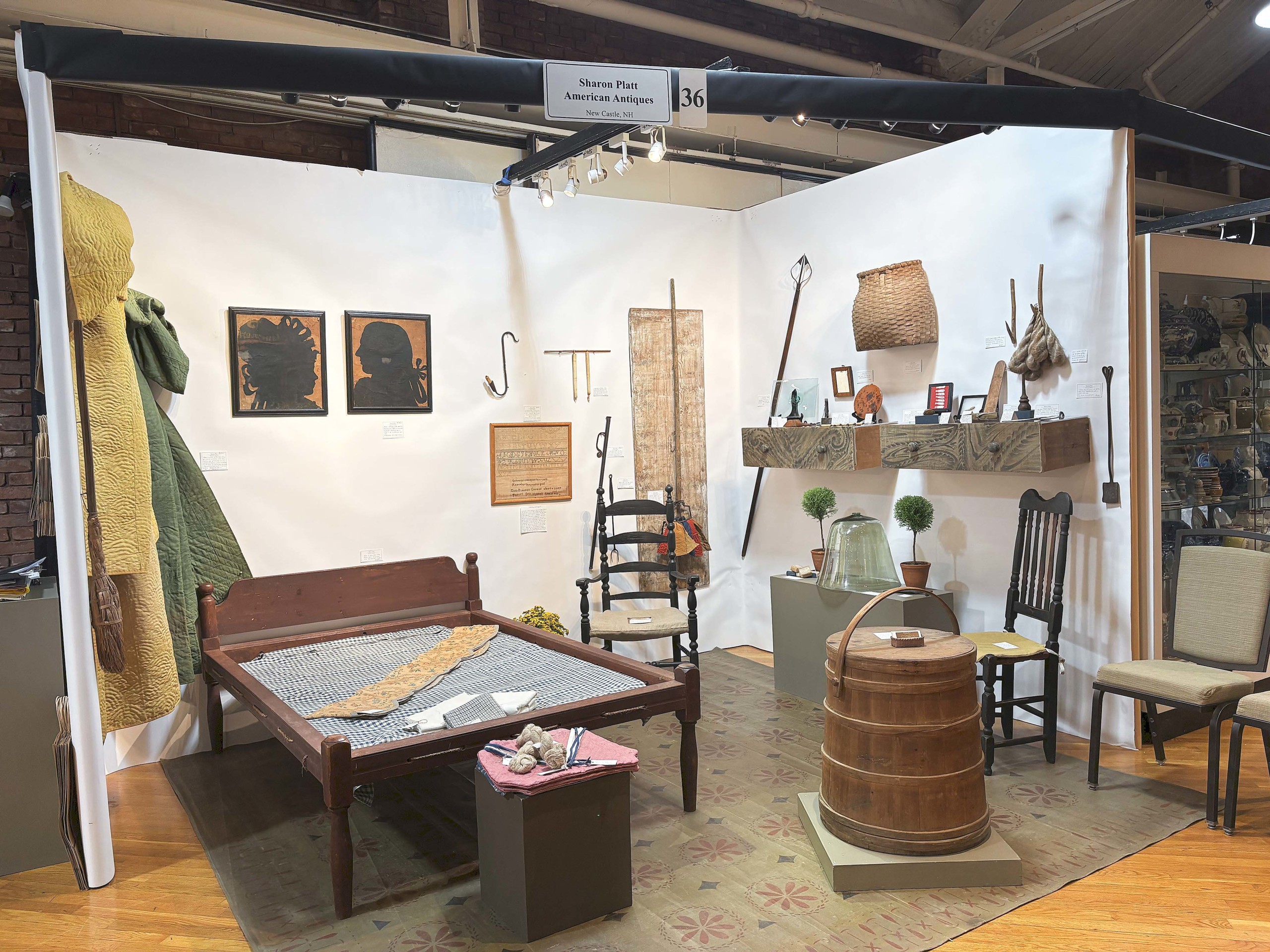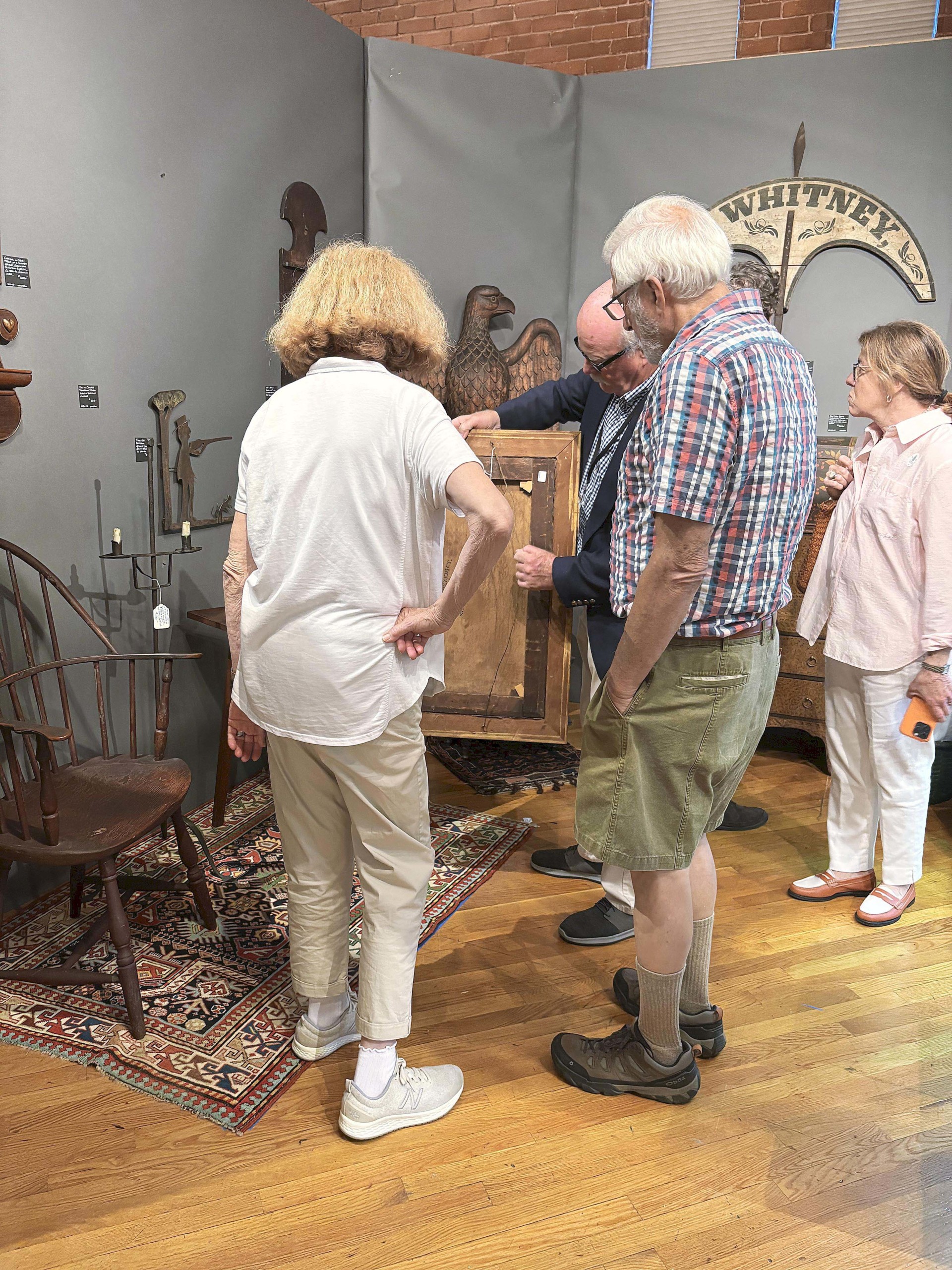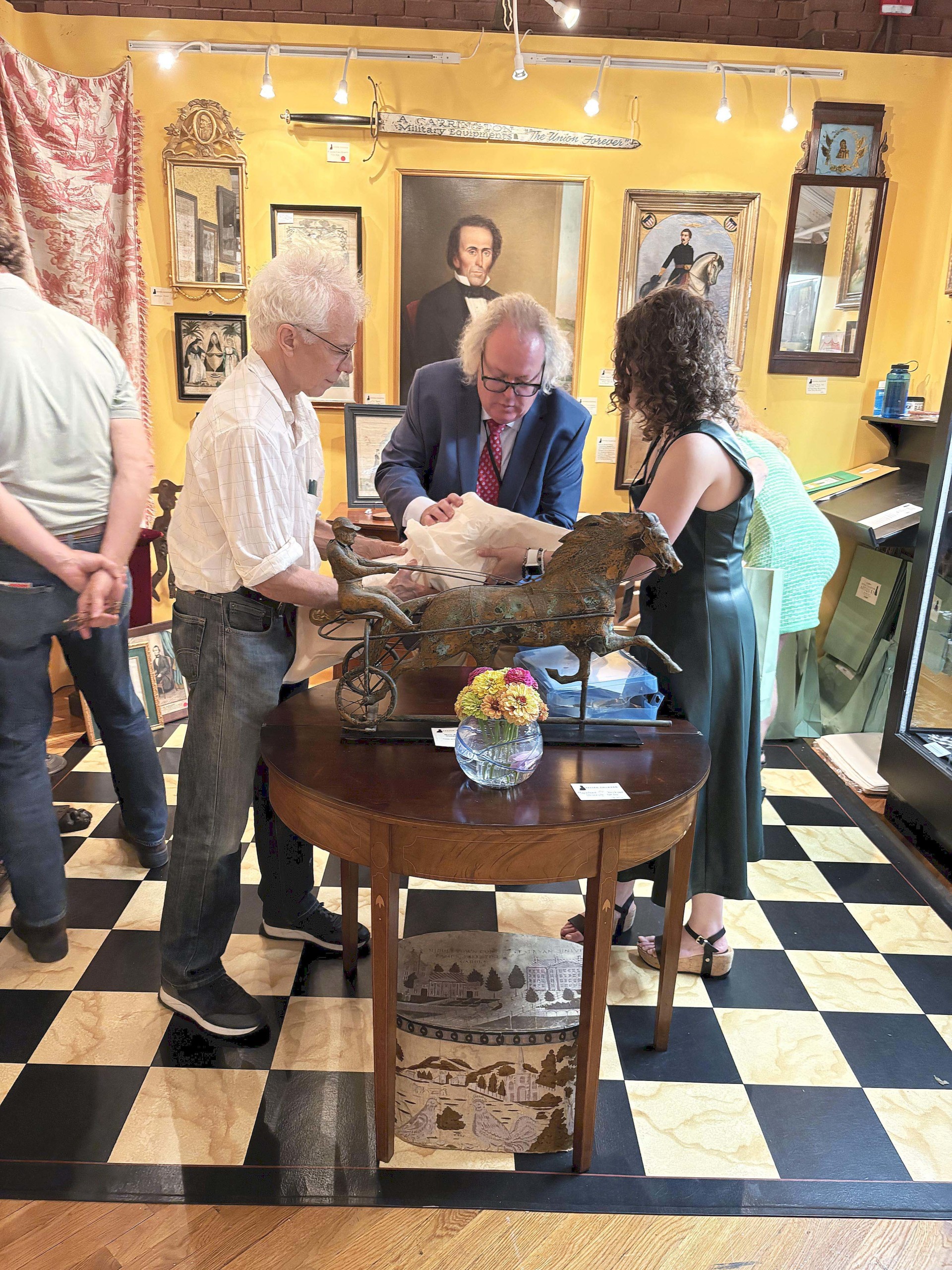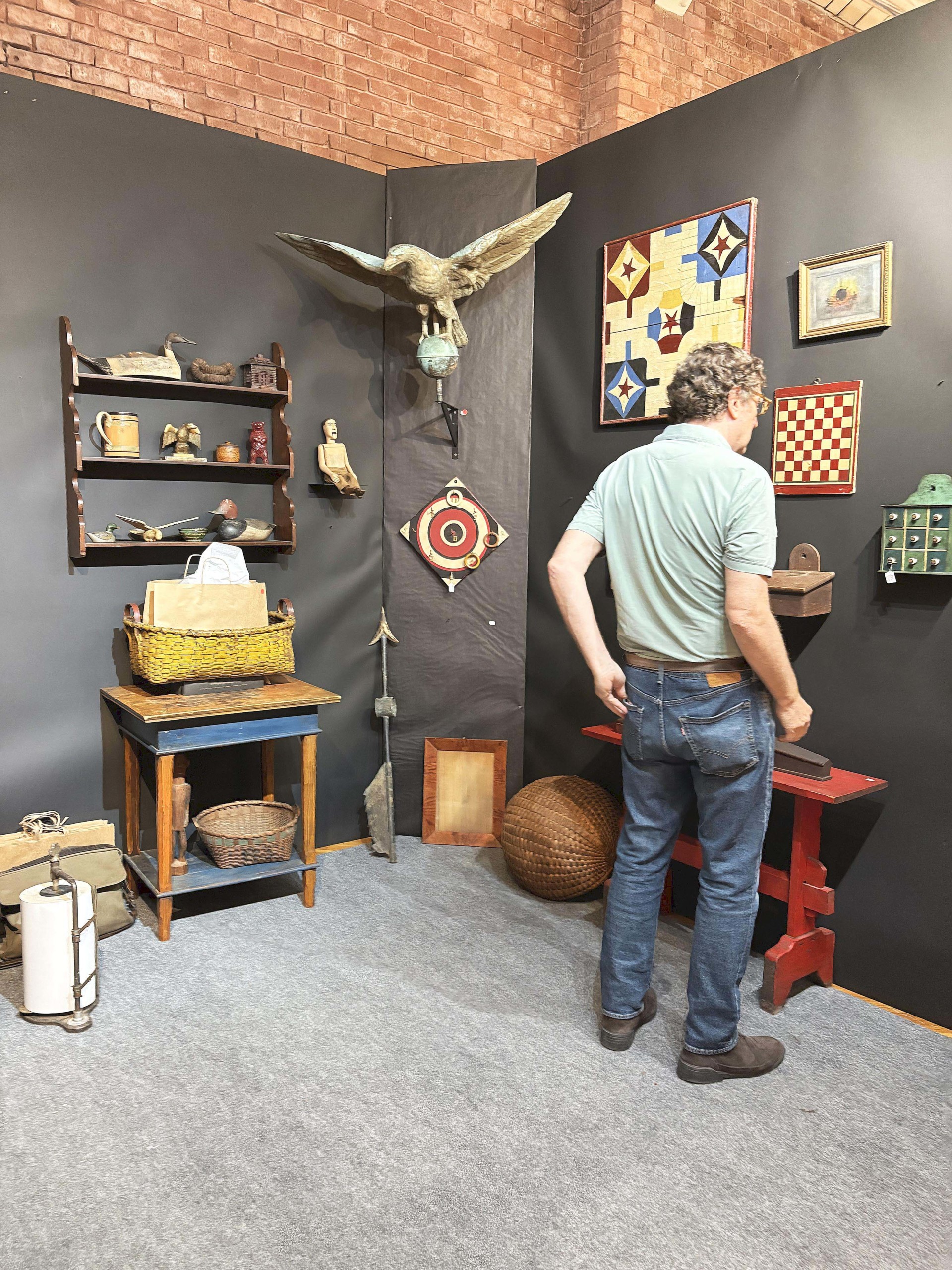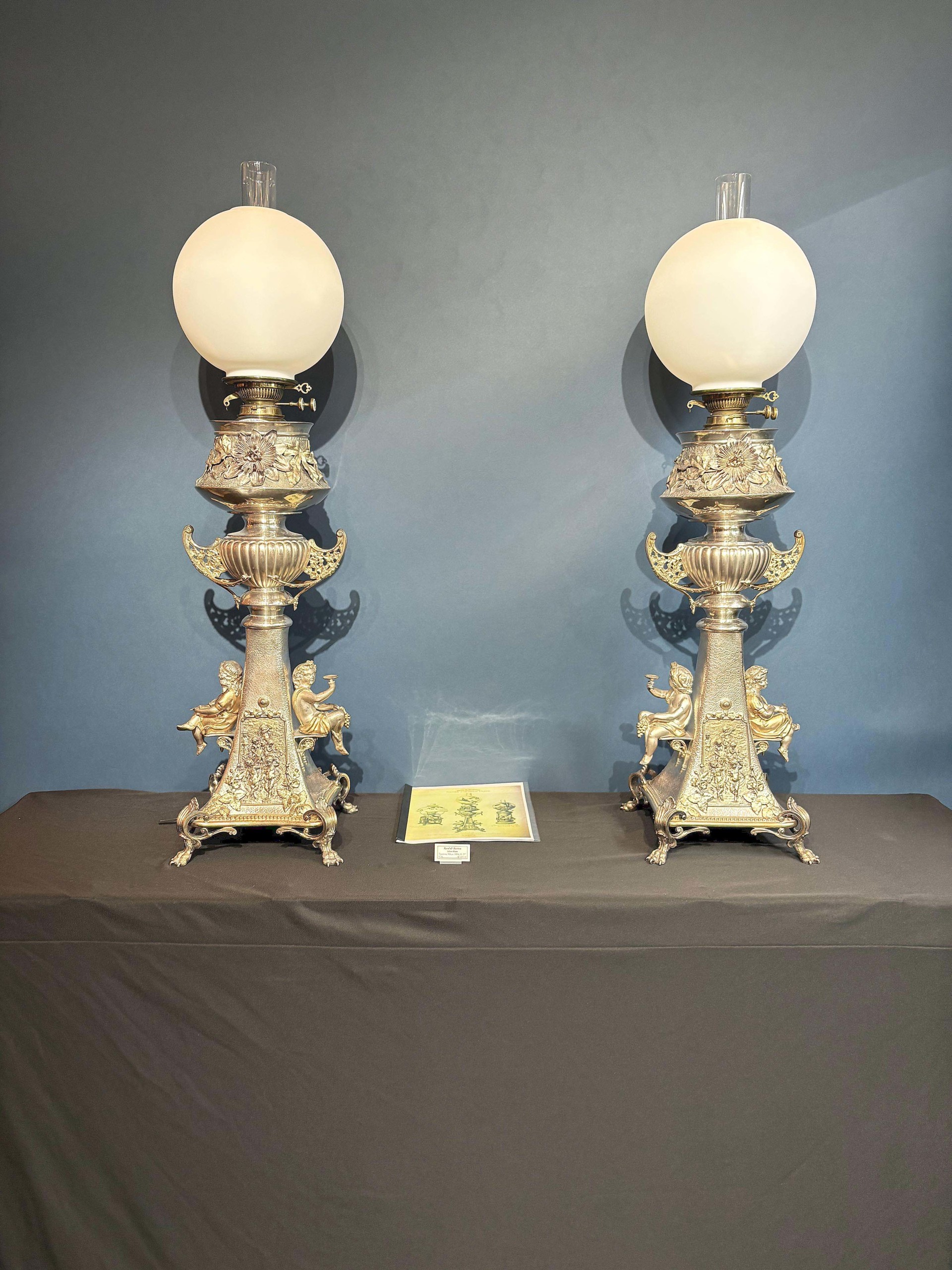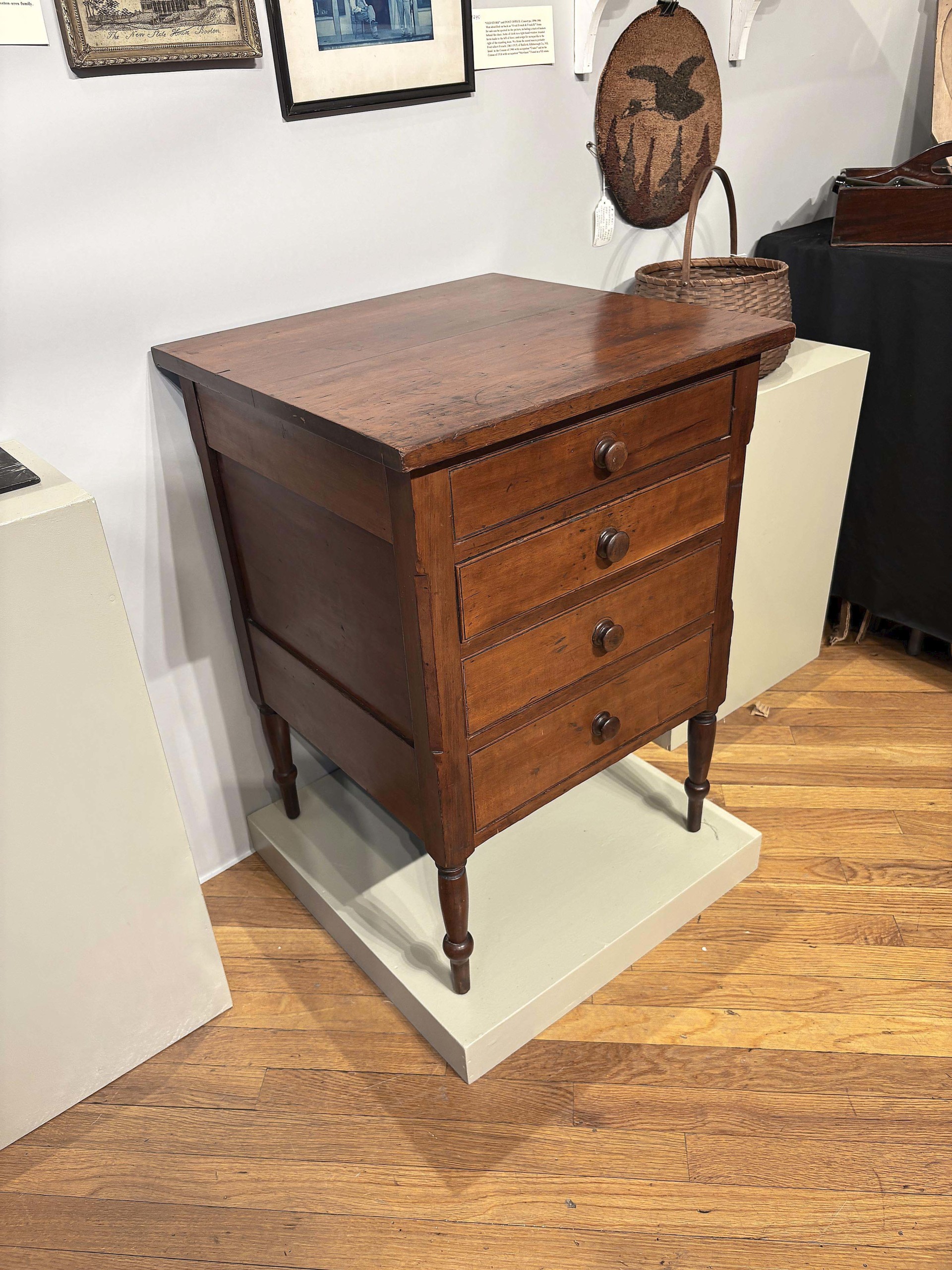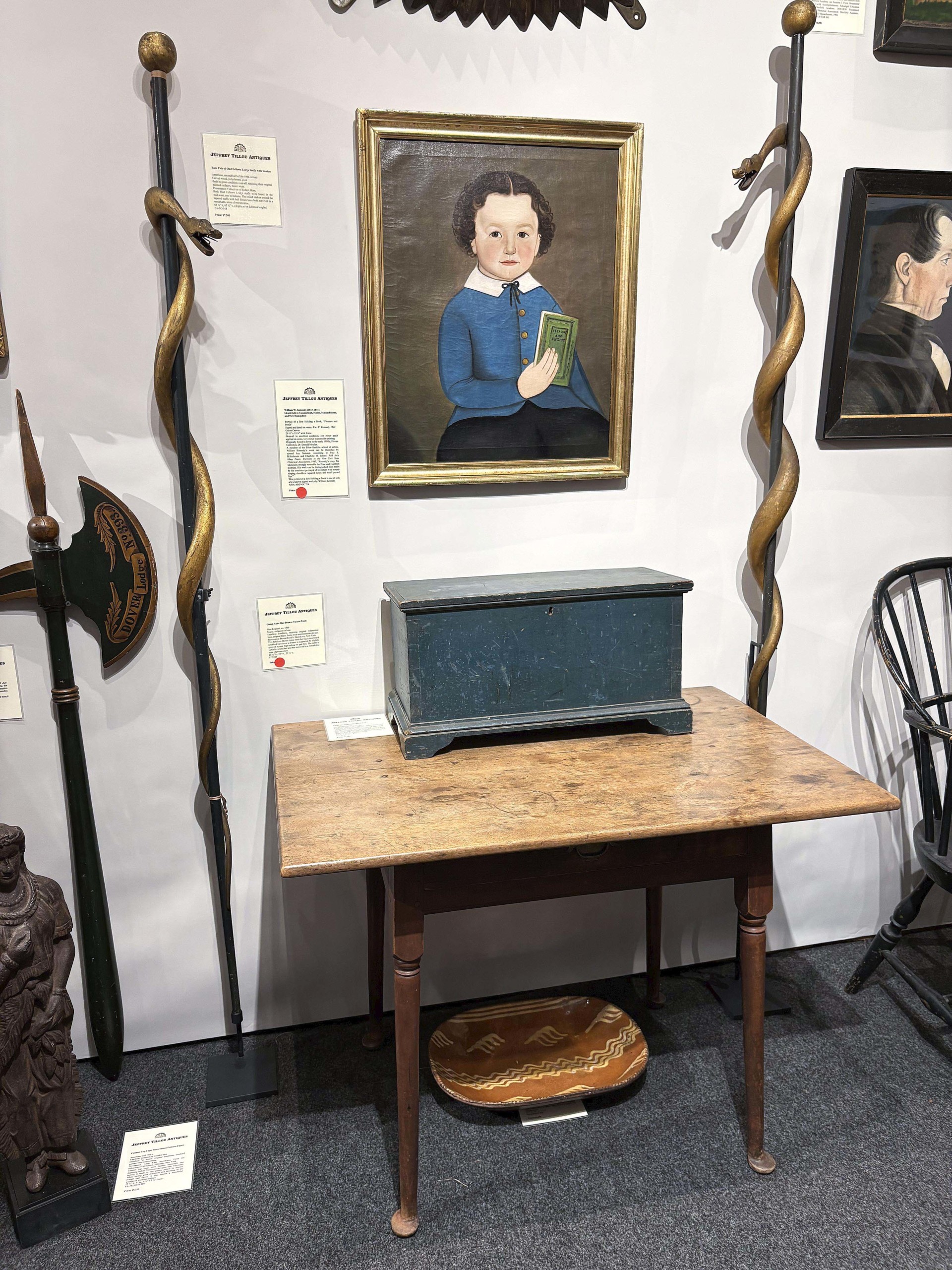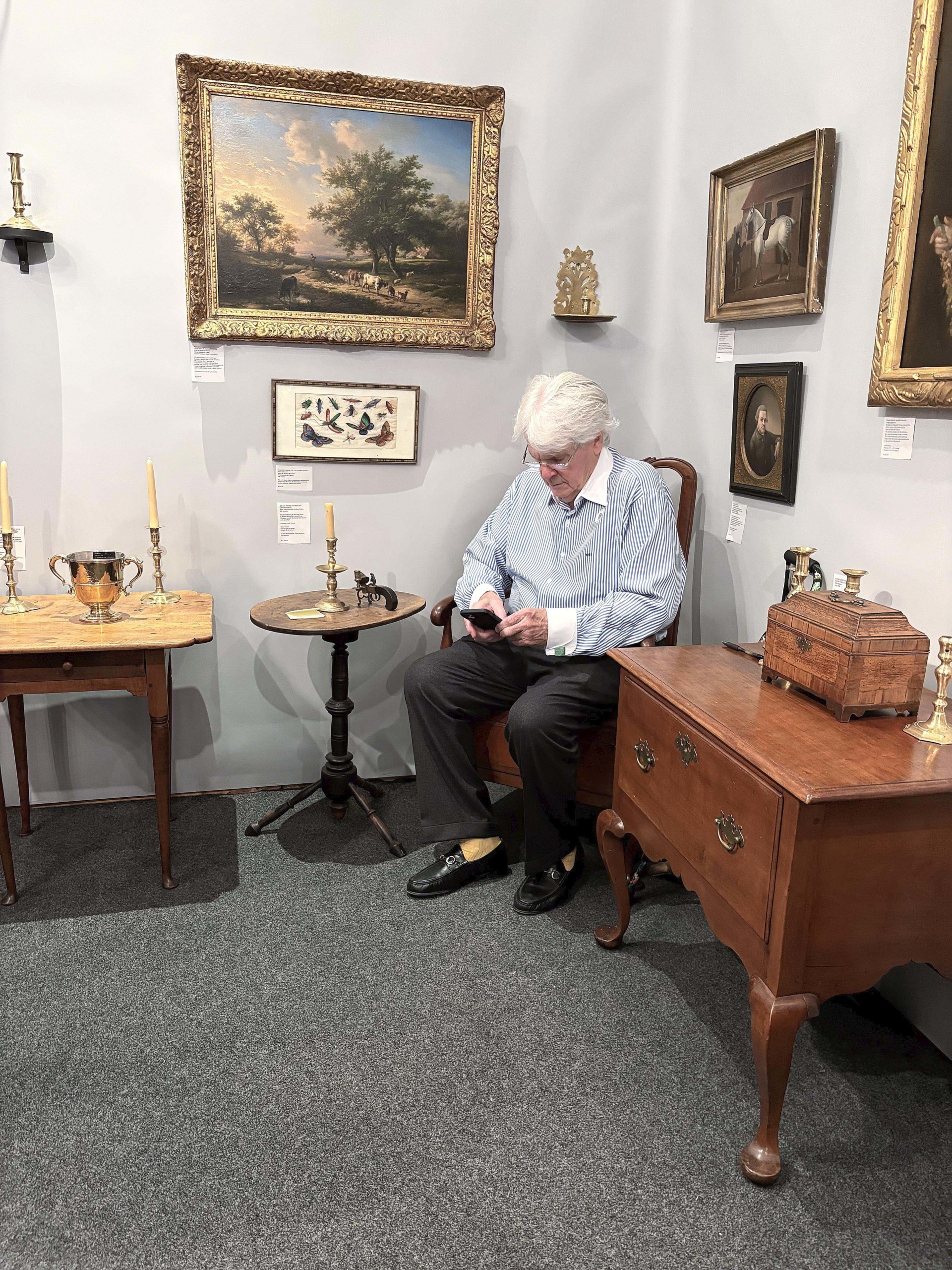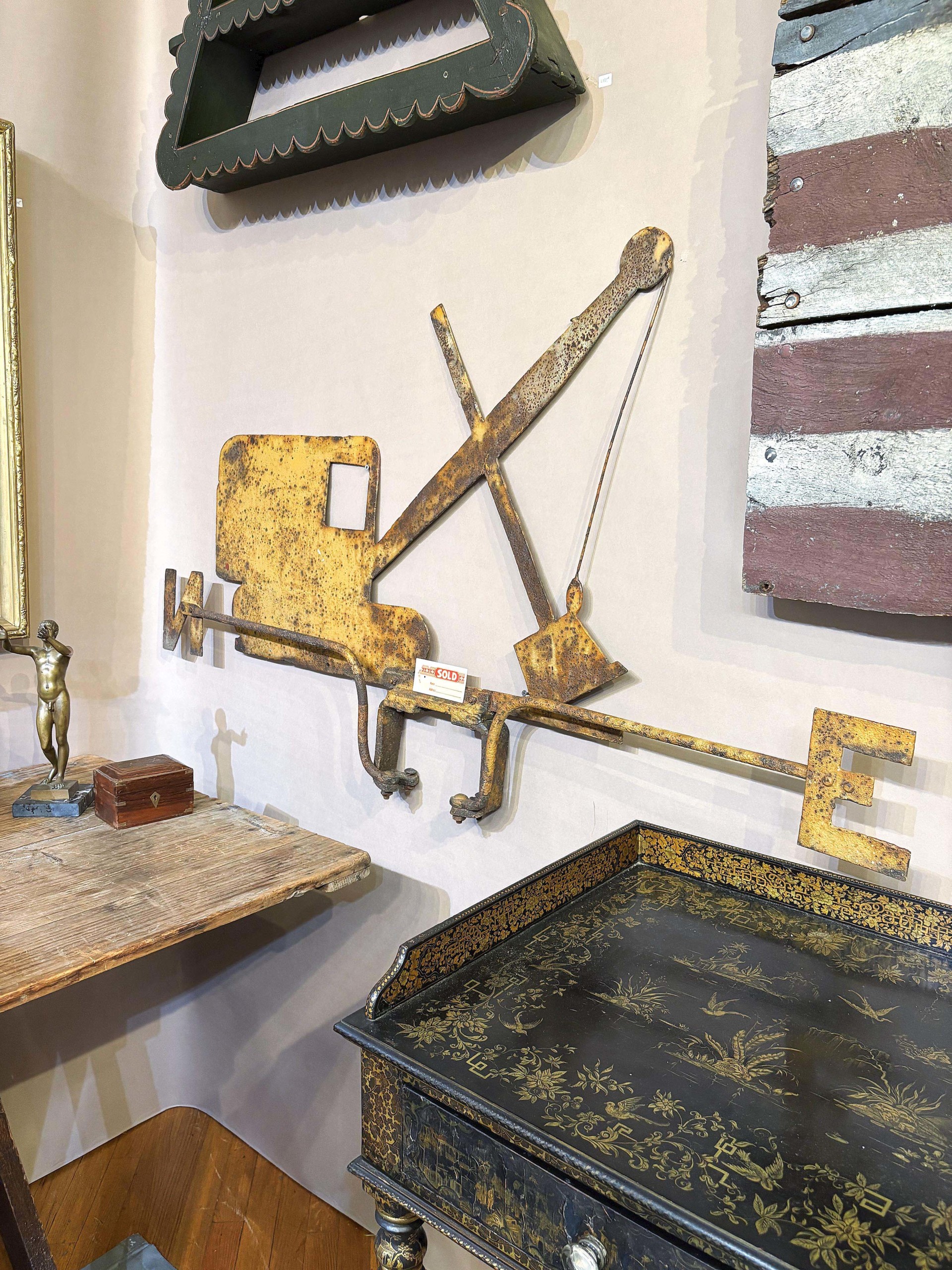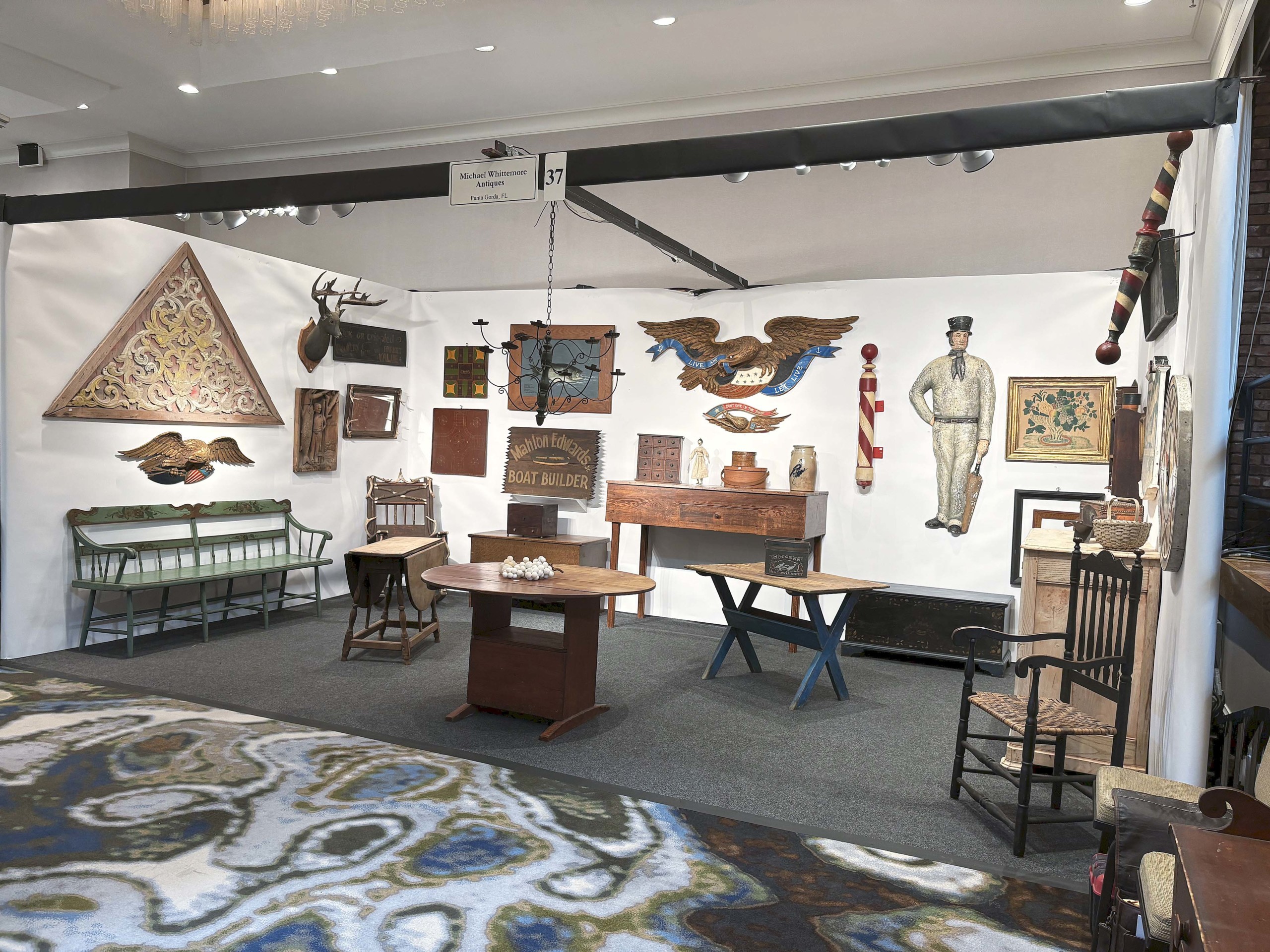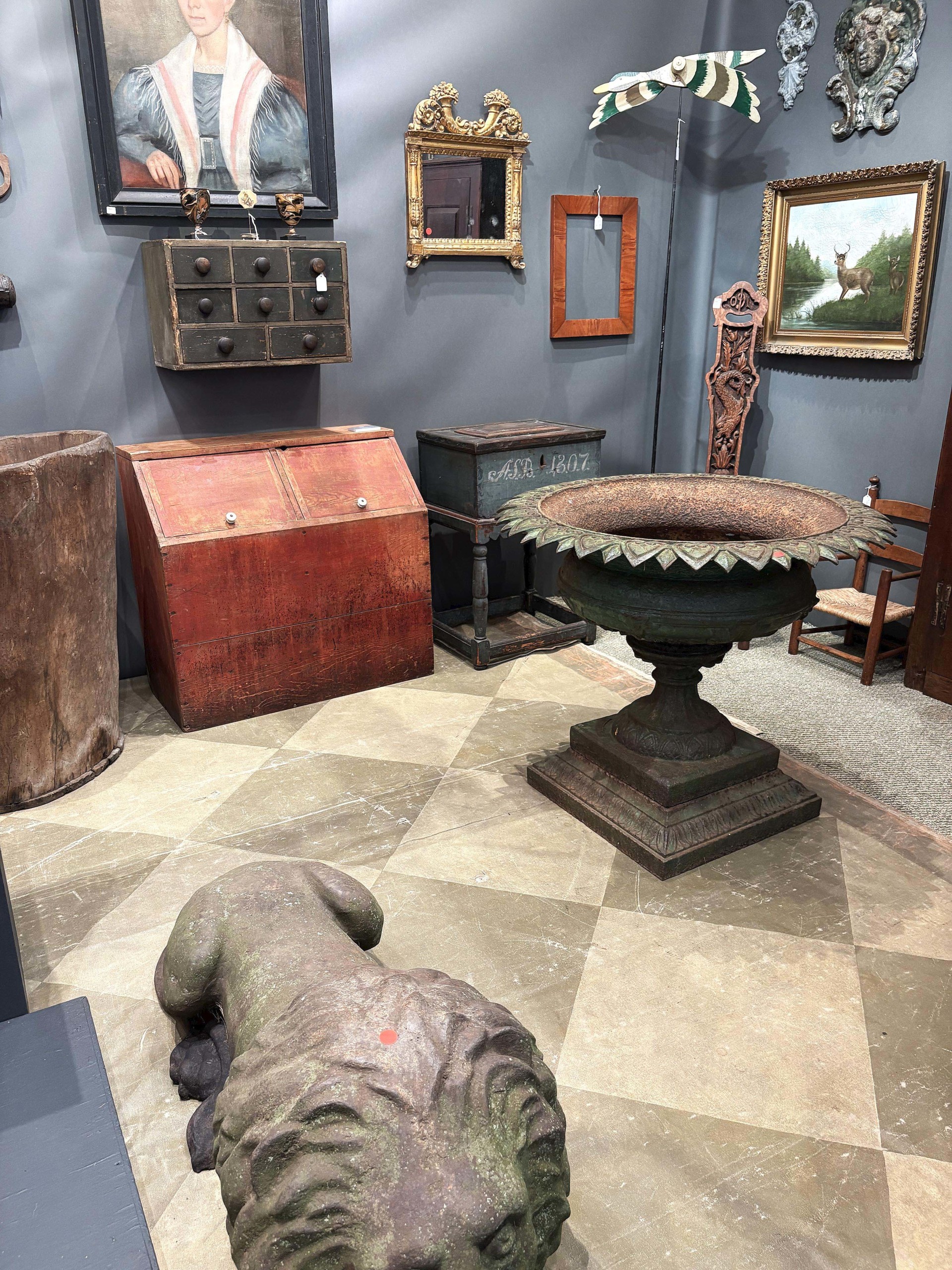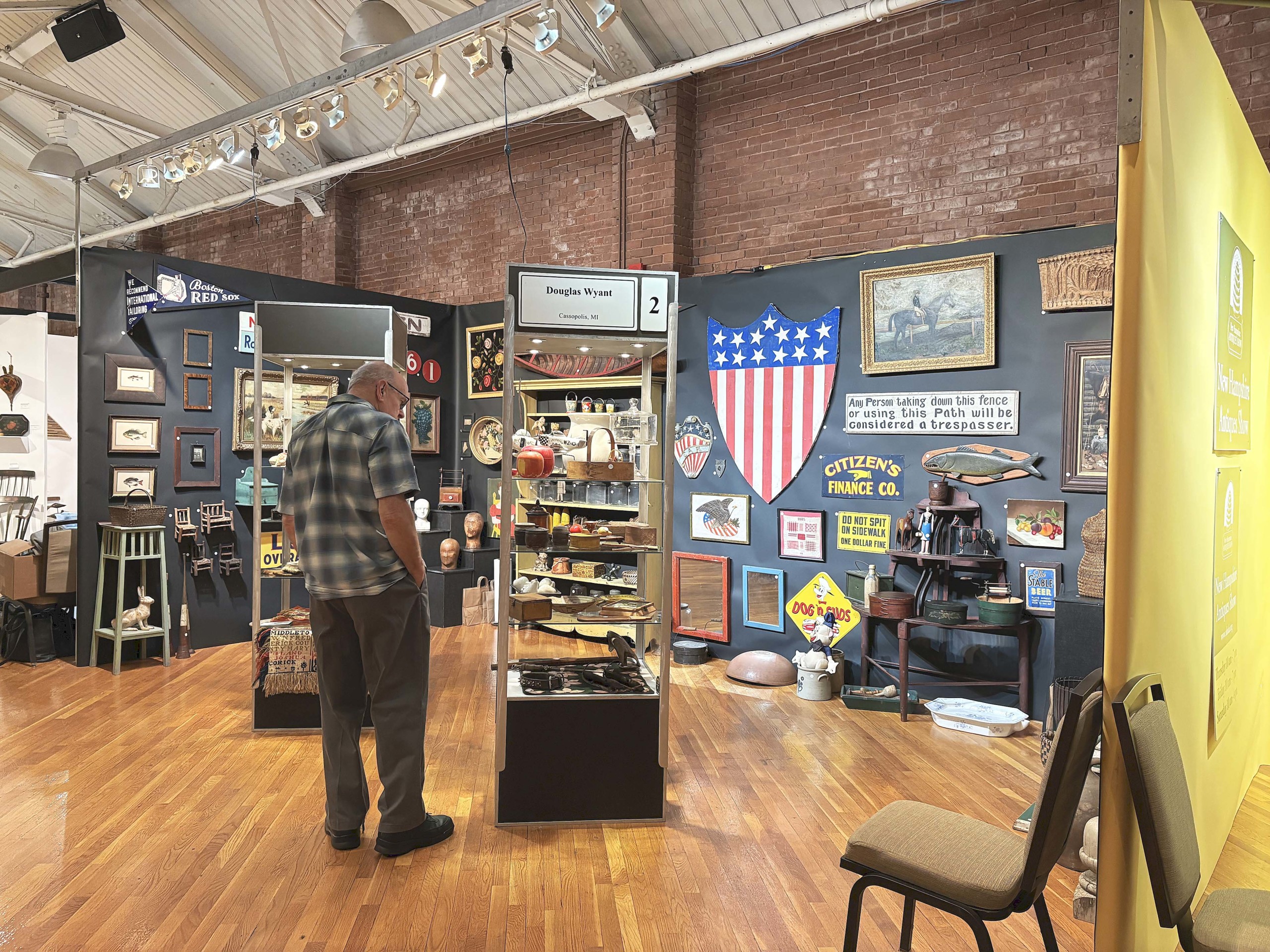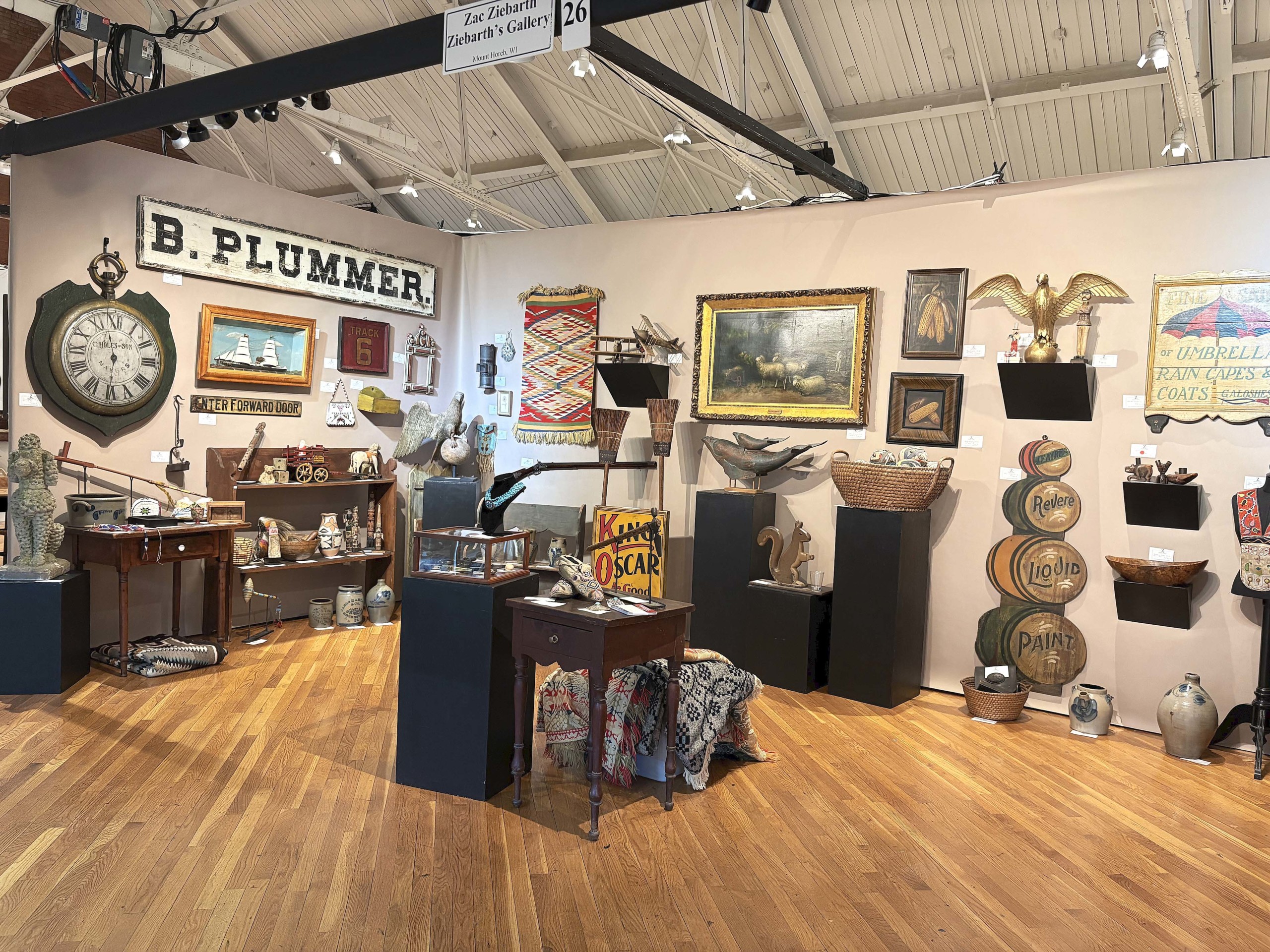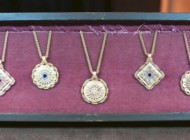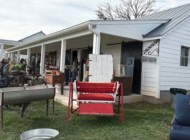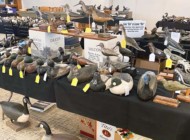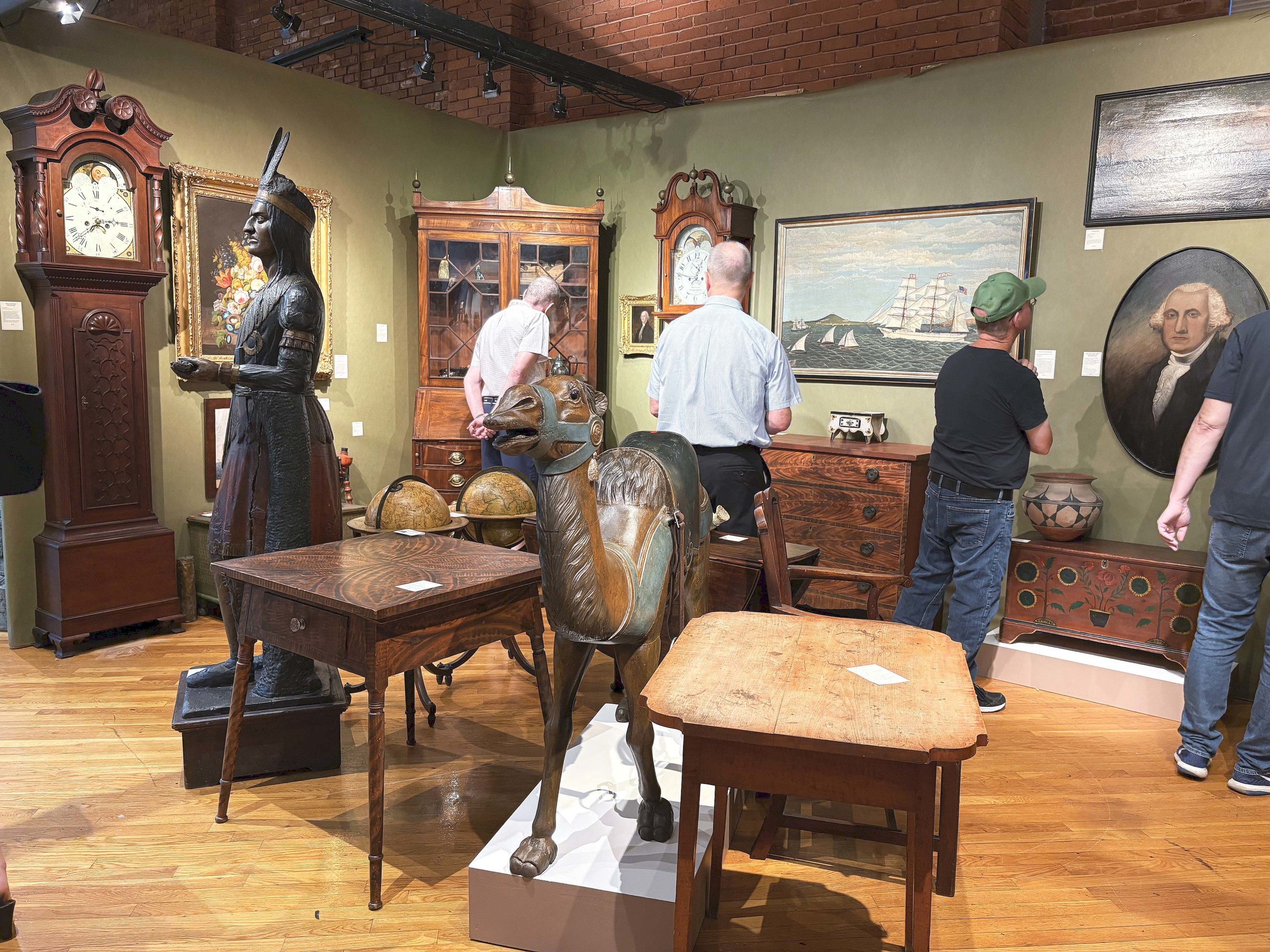
The carousel camel in the center of Kelly Kinzle’s booth is going to a new home, as is the sunflower-painted blanket chest beneath the portrait of George Washington that was on the back of a trade sign. New Oxford, Penn.
Review & Onsite Photos by Madelia Hickman Ring
MANCHESTER, N.H. — The capstone of New Hampshire Antiques Week is always the New Hampshire Antiques Dealers Association (NHADA) show — referred to by most as “the Dealer’s show” — which takes place at the Doubletree by Hilton in downtown Manchester. This year, the annual event celebrated its 68th edition August 7-9, with 57 dealers, many considered leaders in their respective areas of expertise.
Richard Thorner, NHADA president, reported having his best show in 18 years, noting selections he had from the estate of Rex Stark attracted a number of new customers.
“I think the overall show was fantastic. In uncertain times, one never knows what to expect, but luckily we had a record-breaking number of attendees. As an organization, the formula of the show — the size of the show, the dates and times — has been so successful, for so many years, I am reluctant to make any changes. A volunteer group promotes the show and we’re very fortunate to have unbelievably talented people covering the bases, including vice president and communications chair, Sharon Platt; director Gene Pratt; show chair Bev Longacre; and membership chair, Rebecca Connolly Hackler. Everyone is to be commended on their hard work.”
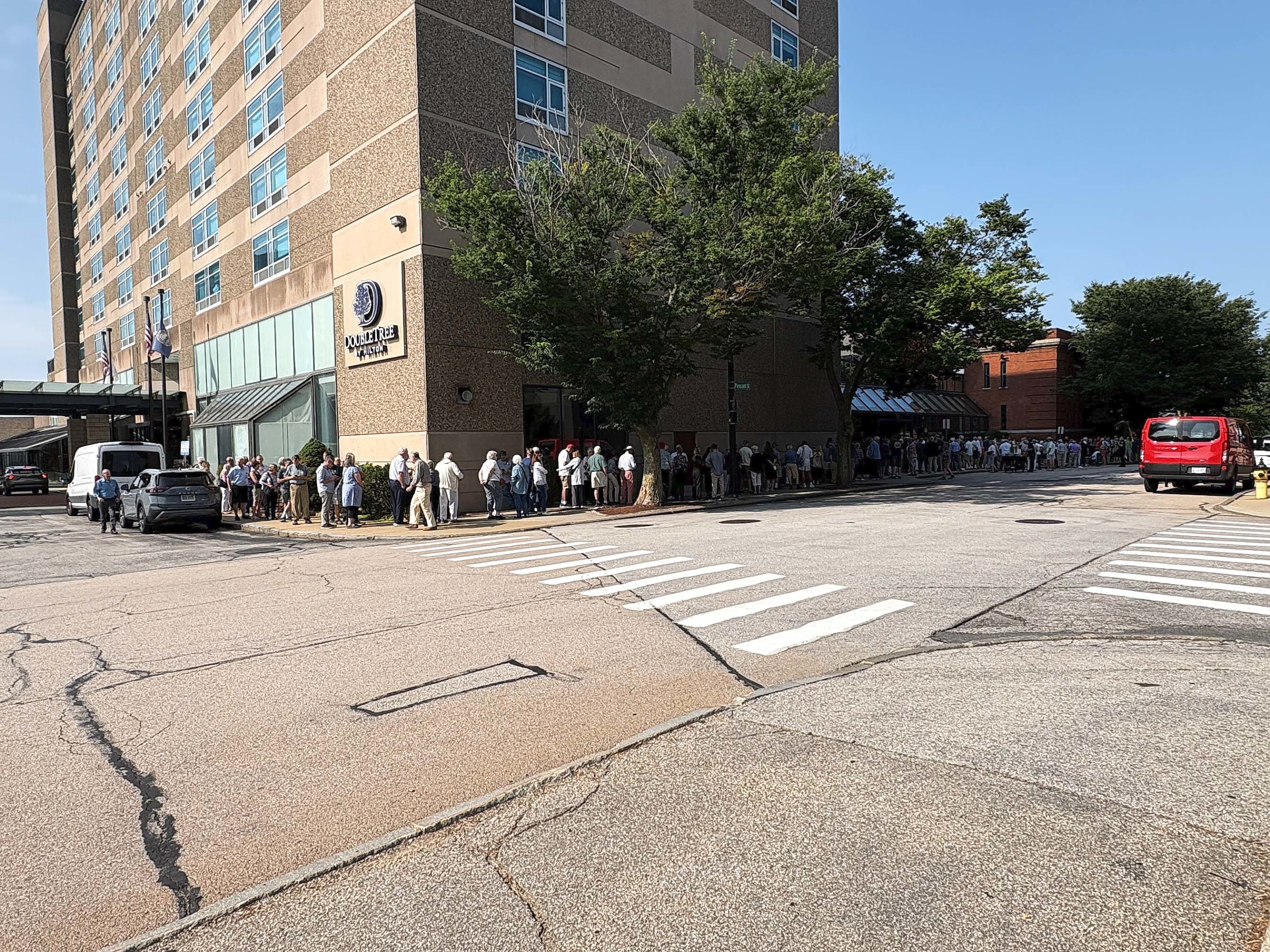
The first wave of show-goers stretched to about 700 the morning of Thursday, August 7. This photo was taken about an hour before the door opened.
Two dealers were participating at the show for the first time this year, early holiday specialist Betty Bell, Betty H. Bell Antiques (Dallas) and Seventeenth and Eighteenth Century militaria expert Philip Mead, Mead Americana (Ambler, Penn.)
Antiques and The Arts Weekly was unable to reach Bell for comment prior to press time, but Mead called in his post-show feedback after a restorative post-show vacation with his family on Cape Cod.
“I thought the response was really positive. I met a lot of people I hadn’t known before, and I expect some good follow up. There was interest across all categories. I’ve been encouraged by the range of people who have been interested in the material I’ve had. At the June show [in Concord, N.H.], I had a customer who was younger than 10. I didn’t have anyone that young at this show, but I did have customers in their 40s, as well as ones that are older. I sell material from a period of American history that is unquestioningly significant and that creates curiosity and interest. I’ve mostly done paper and antiquarian militaria shows to date and am now expanding into antiques shows; I’m excited to keep going forward with that.”
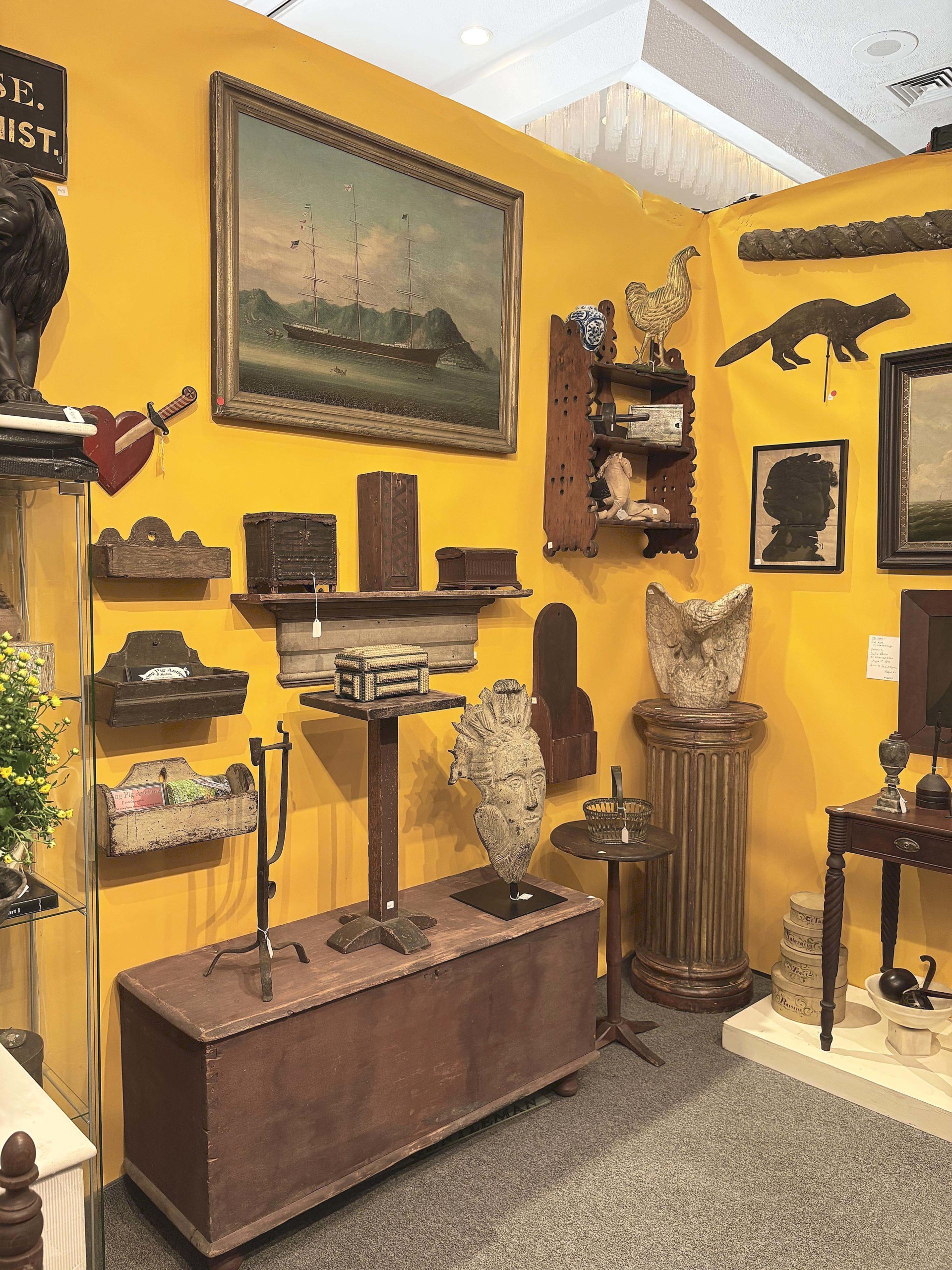
A carved heart and dagger (upper left), China trade ship painting, center top, and sheet-iron otter weathervane, upper right, were among Ian McKelvey’s opening morning transactions. Columbia, Conn.
Signs were popular with buyers and numerous examples spotted “sold” tags — or were removed from the floor entirely — early on. Ian McKelvey’s small “Public Entrance” example found a new home, while Steve Sherhag found buyers for a punched tin eagle sign and one inscribed “Harness Shop.” Matt Ehresman also unloaded two in the first hours of the show: one marked “John Riley” and another for the Stamford Cattle Market; these joined painted furniture and smalls the Ohio dealer brought. Michael Whittemore’s “House of the Golden Thimble / Makers of Professionally Designed Fine Ladies Apparel” sported a red dot by noon on the first day. A “5-Cent Stage” sign that Tom Jewett and Butch Berdan had probably went for a bit more than that, and they also sold a tombstone-shaped feed store sign. An example reading “Terms Cash” was one of several trade signs Allan Katz transacted, with a barbershop, frog, pig and “Garden Services” signs also being written up.
Steven Weiss noted that automobilia signs were a go-to decorating choice for garages; he should know, he’d sold two in the first morning. Older signs that found new homes included a blacksmith trade sign and a “1899 BW Co” sign, both sold by Steven Still. A sword-shaped sign for “A Carrington Military Equipment” that advocated “The Union Forever” sported a telling red dot by midday, courtesy of Thorner. Adam Irish found buyers for a “Variety” sign as well as a tattoo and barber trade sign.
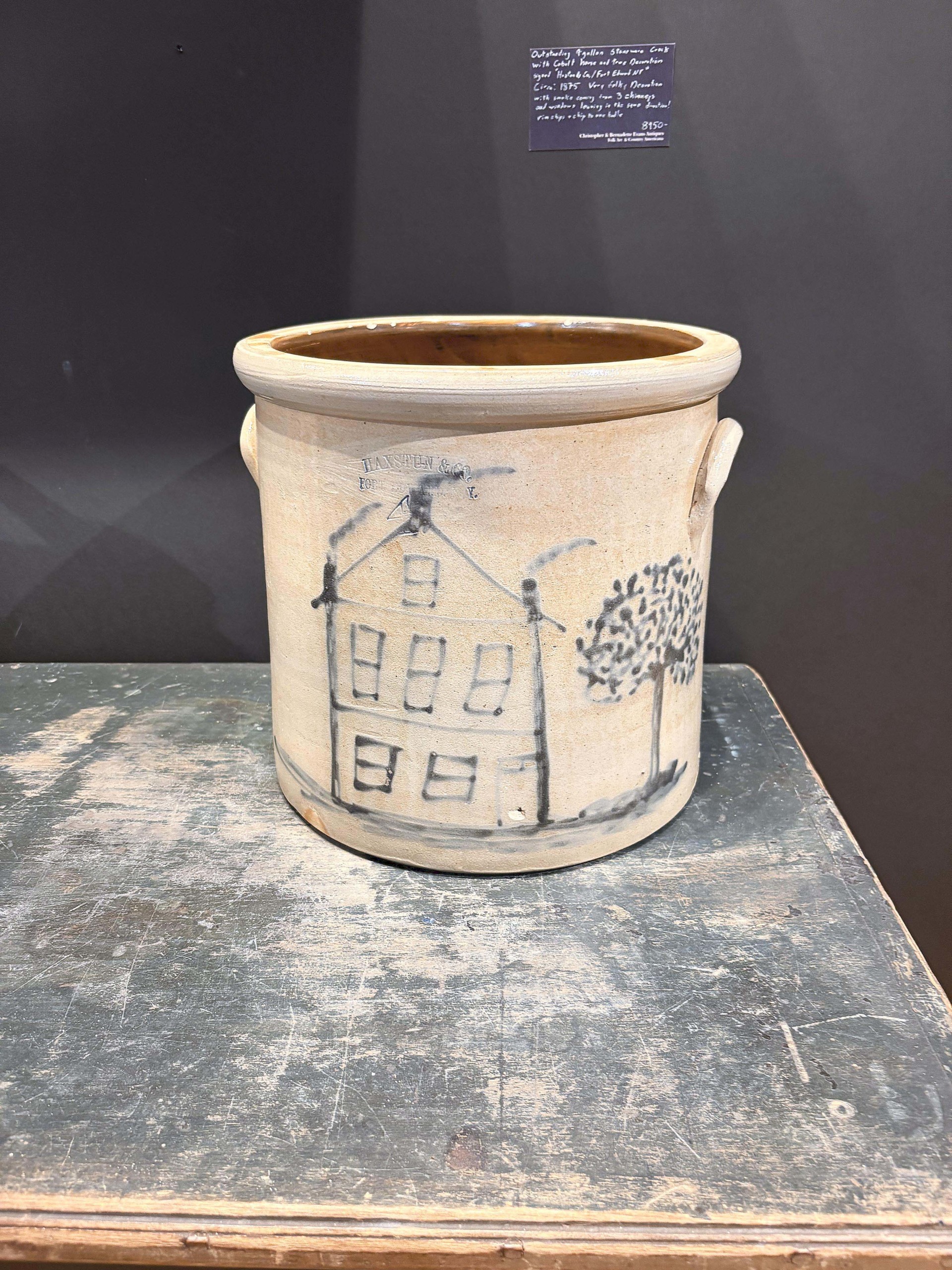
One of Christopher Evans’ favorite pieces was this four-gallon stoneware crock, made by Hoxton & Co in Fort Edward, N.Y., circa 1875, that depicted a house. Christopher & Bernadette Evans Antiques, Waynesboro, Va.
Waynesboro, Va., folk art specialists Christopher and Bernadette Evans moved to the upper level in 2024, a change that brought them exceptional traffic previously. The same held true this year, with early sales including a painted mirror, stoneware in a variety of sizes and shapes, a painted dovetail box, a terrier doorstop, an iron planter and a green-sponge-painted blanket chest.
Sheridan Loyd has also moved around on the show floor and was now on the lower level. Ohio auctioneer, Amelia Jeffers, was helping out the St Joseph, Mo., dealer out during the first crush. Among some of her eye-catching pieces was a circa 1840 trapunto still life and an early Nineteenth Century pine demilune table, both from New England, and a late Nineteenth Century goose decoy.
Showing on the lower level, David A. Schorsch & Eileen M. Smiles had a power-packed booth and Schorsch told us, “We sold about a dozen pieces to include accessories, paintings and furniture, to both long time and new clients, young and old, and to a notable museum. The show, as always, was fun and an opportunity to visit with many old friends. Sold highlights were a 34-inch drop leaf tea table in old finish, a documented Ruth Henshaw Bascom portrait of Mrs Chamberlain, and a rare stone carving of a baseball player. 2025 was one of our most successful shows at NHADA and demonstrated the unique enthusiasm generated at this legendary event.”
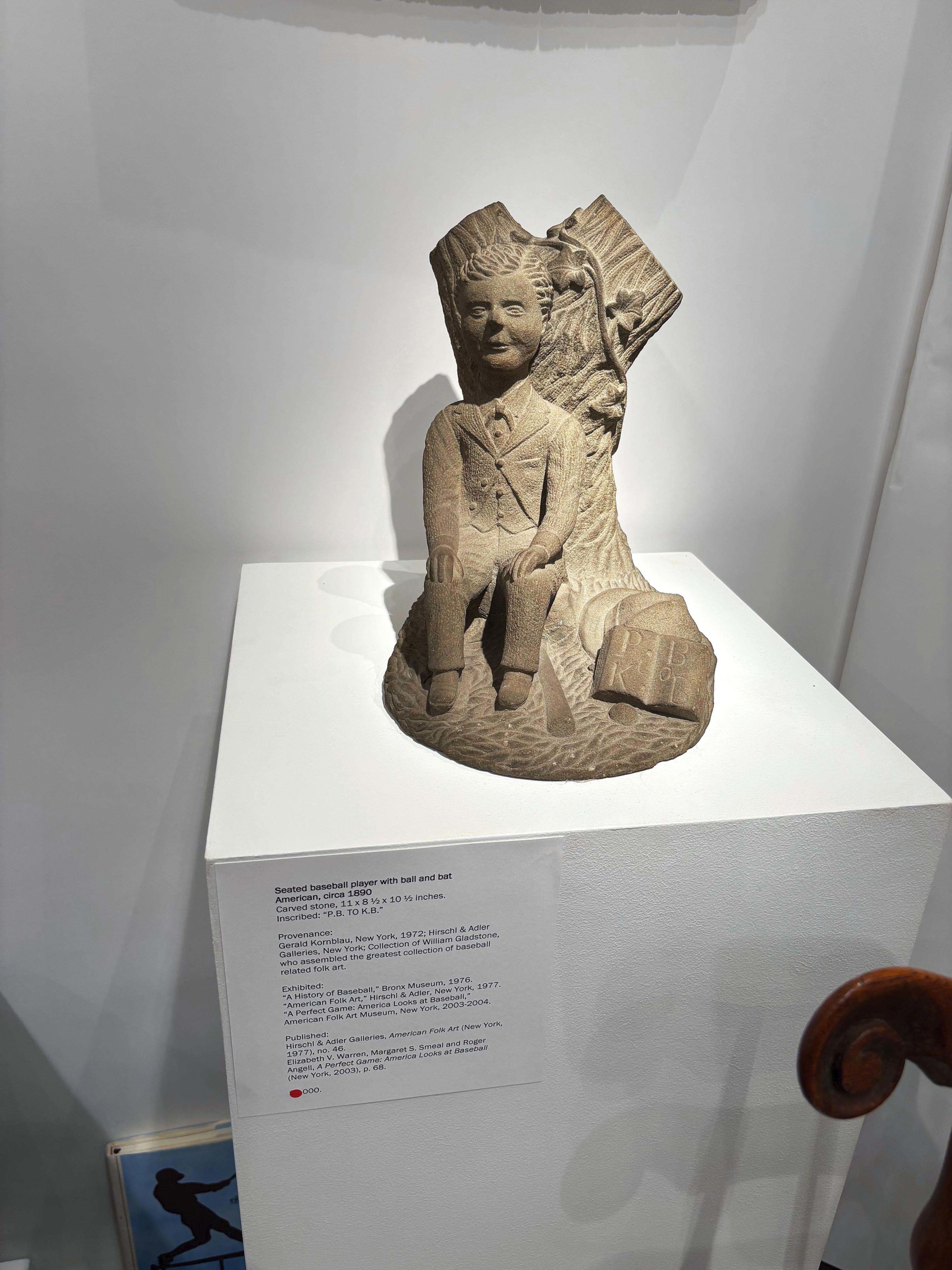
One of the first-day sales Eileen Smiles and David Schorsch closed was this carved stone seated baseball player, circa 1890, that had been shown in three exhibitions and included in two separate publications. David A. Schorsch – Eileen M. Smiles, Fine Americana, Woodbury, Conn.
The booth of Steven Corrigan and Douglas Jackman was so busy during the first hours of the show that we made several passes before they were quiet enough to chat. Among their sales was a portrait of a woman by Aaron Dean Fletcher, a ship diorama, pantry boxes, a miniature tape loom, a watercolor by Joseph Davis, stoneware and redware, Canton porcelain, baskets a watermelon painting and a wood canteen.
NHADA vice president and communications chair, Sharon Platt closed the deal on numerous pieces before noon on the first day, including silhouettes, a black-painted New England armchair, a Nineteenth Century corn broom she described as the “best,” a blowpipe, a shiplapped wall board, glass panel, early mirror and two Lindsey Woolsey bedcovers, one in yellow, the other in green.
Manheim, Penn., dealer Steven Still moved a Philadelphia ball-and-claw foot candlestand, a Lehigh County dower chest, a pair of fancy chairs from Baltimore, a Chippendale cherrywood reverse-serpentine chest of drawers, a Pennsylvania folk art woolwork rug, panels and a cakeboard, each with patriotic motifs, and a painted mirror.
Peter Sawyer sold several important things on the first day, including a Nathaniel Munroe Federal tall case clock, a Dunlap school stand, a David Wood shelf clock, a New Hampshire mirror clock and a Boston banjo clock.
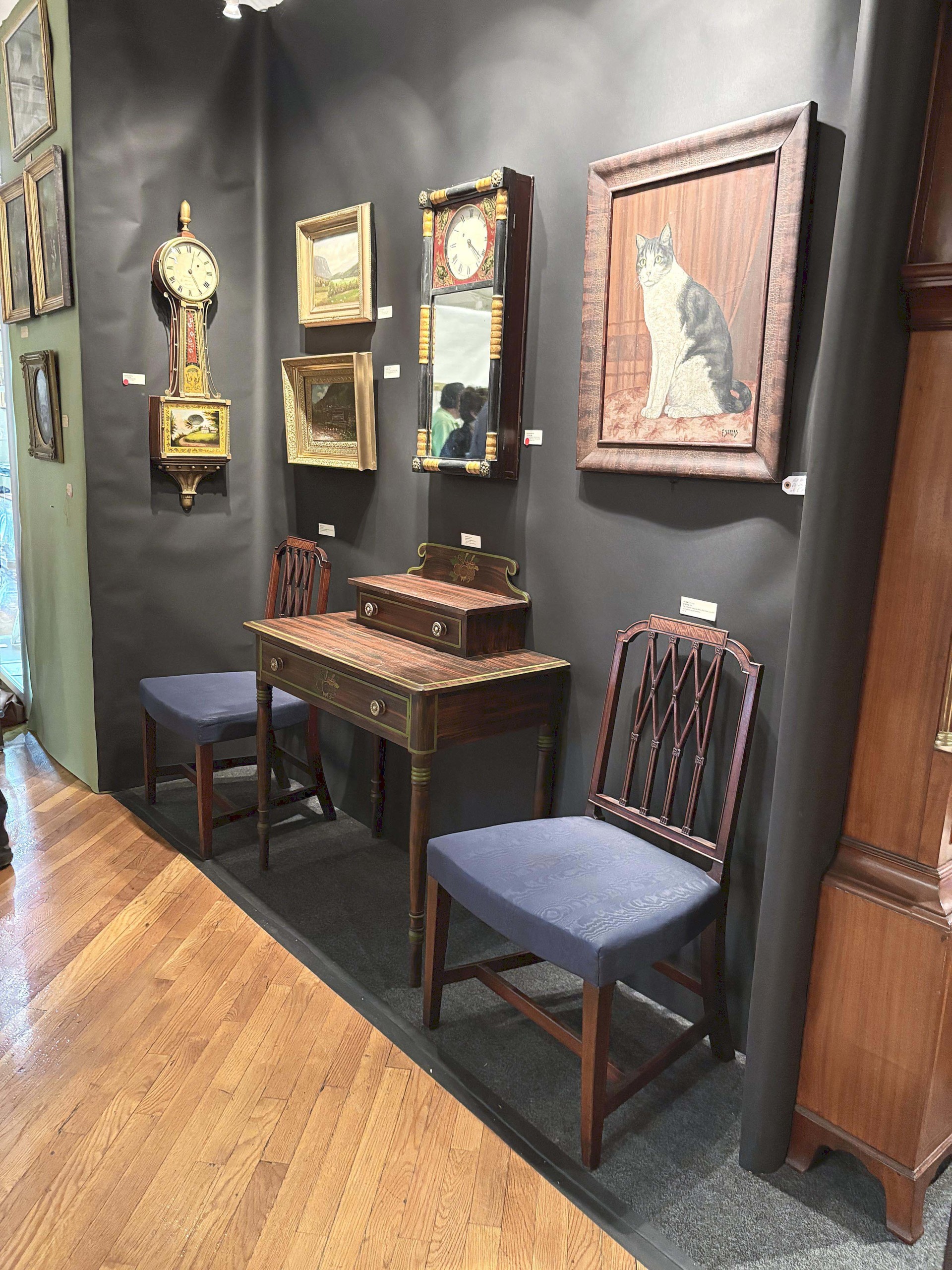
The mirror clock on the center of Peter Sawyer’s outer wall was from New Hampshire and sold on opening day. Peter Sawyer Antiques, Exeter, N.H.
Colchester, Conn., dealer Arthur Liverant was enjoying being at the show. Early sales tallied by him and associate Kevin Tulimieri were a Federal mahogany server, a miniature horn armchair and some needlework.
Folk art collectors had a tremendous variety of choice on the first floor, with the booths of both Allan Katz and Olde Hope within steps of the show’s front door. Katz, who debuted at the show in 2024, was swamped in the first few hours, emerging after to report nearly a dozen sales that included a painted Vermont blanket chest, an Egyptian Revival folk art wall clock, a watch hutch and an exceptional painting of Brooklyn by Karol Kozlowski that dominated his entire back wall.
A few feet from Allan and Penny Katz, Edwin Hild and Patrick Bell were matching their sales at a breakneck speed. By midday, receipts had been written for a portrait of a lady by George Hartwell, a New England blue-painted lift-top chest, an early Twentieth Century checkerboard, a painting of a boy with a lamb by Zedekiah Belknap, a hooked rug with two cats, a green-painted bench, a graduated stack of pantry boxes and a dry sink.
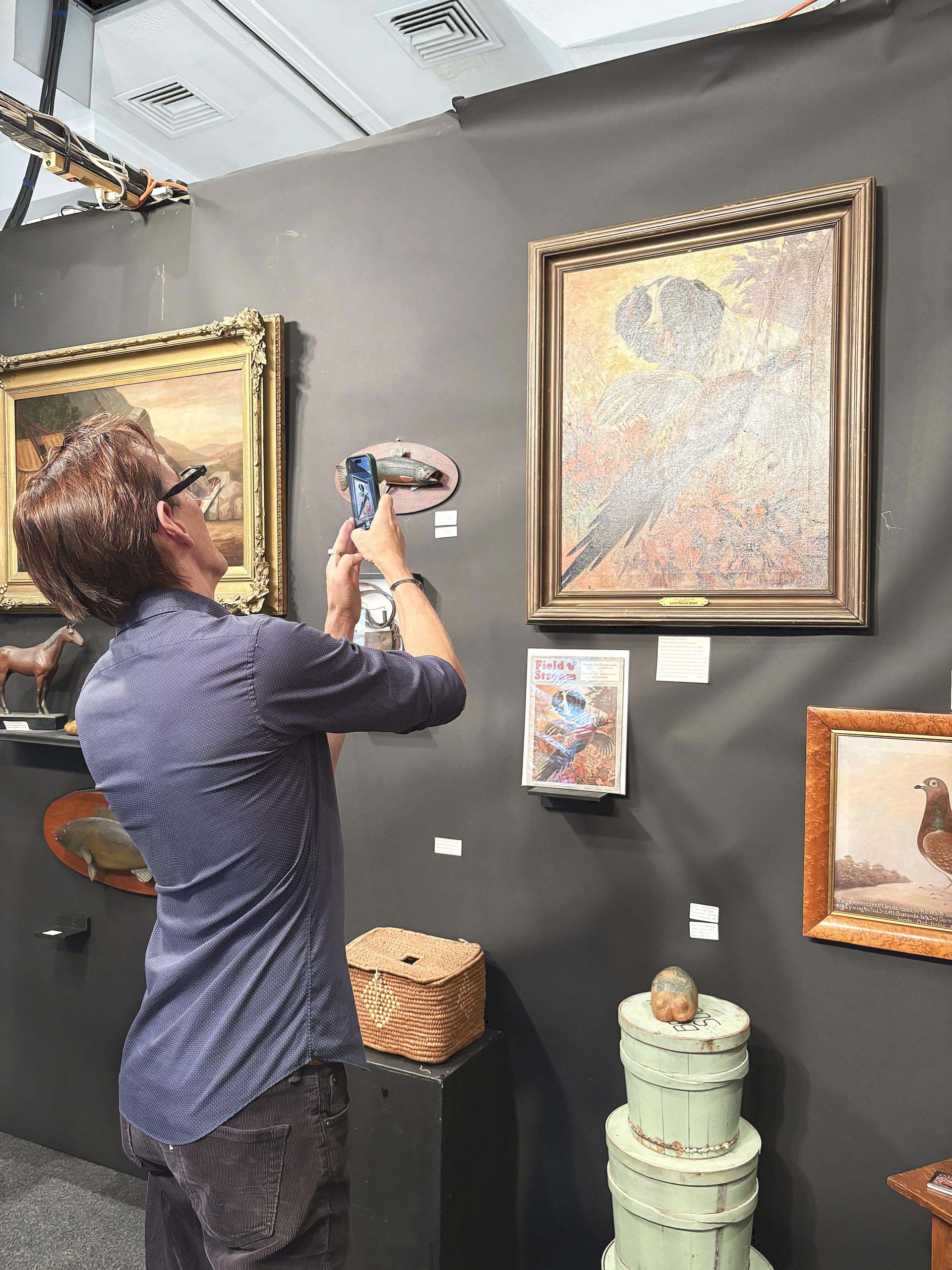
Lynn Bogue Hunt’s sporting picture that was the cover of a 1927 issue of Field & Stream magazine was snapped by an interested show-goer. Robert Burger Antiques, Mount Vernon, Ohio.
Sporting art and collectibles are Robert Burger’s bread and butter, and the Ohio dealer was returning to the venue following his debut in 2024. Sales included a fish wall plaque, a pair of harness holders and a Penobscot carved root club. He anchored his back wall with two original Field & Stream covers — one by Henry Sumner Watson (1918) and another by Lynn Bogue Hunt (1927). Both got a lot of attention.
Silver specialists Spencer Marks — Spencer Gordon and Mark McHugh — were particularly proud of a pair of silver plated Reed & Barton lamps, made in Taunton, Mass., circa 1884, which they’d acquired from an estate. A copy of the manufacturer’s catalog was at hand for prospective buyers to peruse. Another exceptional object was a Barbour Silver Company Martelé centerpiece bowl made by Christopher Whelan for the 1904 Saint Louis Purchase Exposition; it was considered to be the finest example of his known work.
The 69th Annual New Hampshire Antiques Dealers Association show is scheduled to take place Thursday-Saturday, August 6-8, 2026. For information, www.nhada.org.
